Role: Lead Research & Designer
Other Team-Members: Producer, Intern
This was a Fjord Makeshop project. The Makeshop is Fjord’s “proprietary build-to-think process that allows us to explore ideas and build design solutions in fresh ways. After all, the only way to see if a design or product works is to make it. And that’s exactly what we do, using technology as an enabler and starting point for great design.” - Fjordnet.com
When we design for federal needs and services our default users are almost always adults - however young adults and children are often involved in federal services, programs, and locations in a variety of ways. In this research study and concept project we explored children and parent’s:
Feelings towards cultural, racial, and family identity
Feelings of giving personal information or data (Consent)
Feelings towards environmental machinery or technology
Feelings towards procedural processes and flow of people
Feelings towards reception and waiting
How did we define Transitional Environments: The in-between environments in which individuals or families’ experience change due to bureaucracy, travel, or security. For example: airports, country borders, hotel receptions, school & universities, train stations, and hospital receptions. In the future: automated car or train services, and more.
Creative Interviews with Children, Young Adults, and Parents:
This project required that we interview an age range of children. We spoke to children from age 2 to 17 and, because of the broad spectrum of cognitive development, we created a variety of interview structures. For younger children we created collaborative “play” sessions where the children would play and converse with the researcher. Older children were interviewed more directly, although they were also asked to collaborate with the research on creative questions such as “(1) Could you draw what you think you will see when you walk into the rocket launch zone? (2) If you need help, what should be there to help?” Parent interviews were in a casual/ conversational manner both in homes or at the studio.

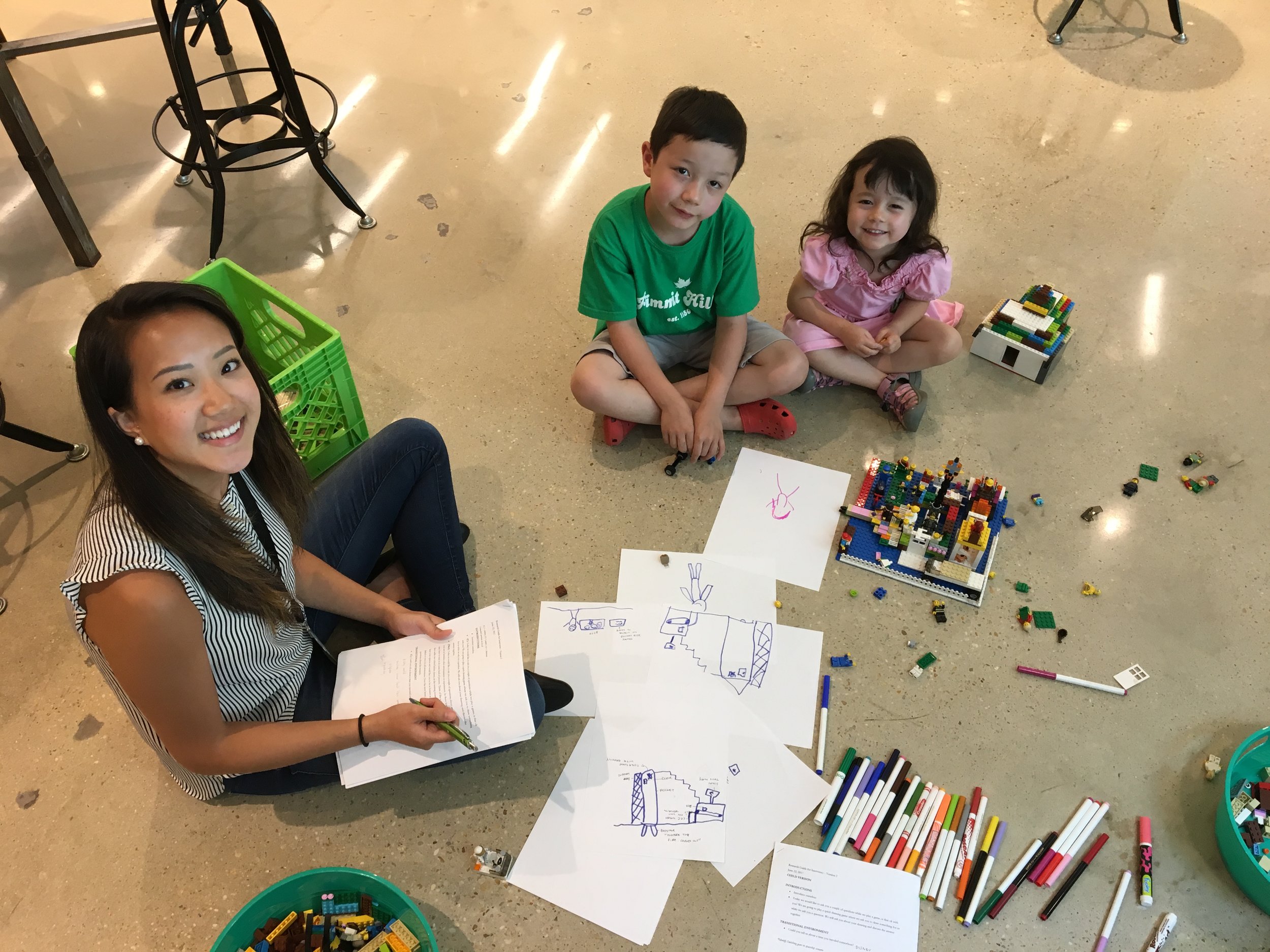
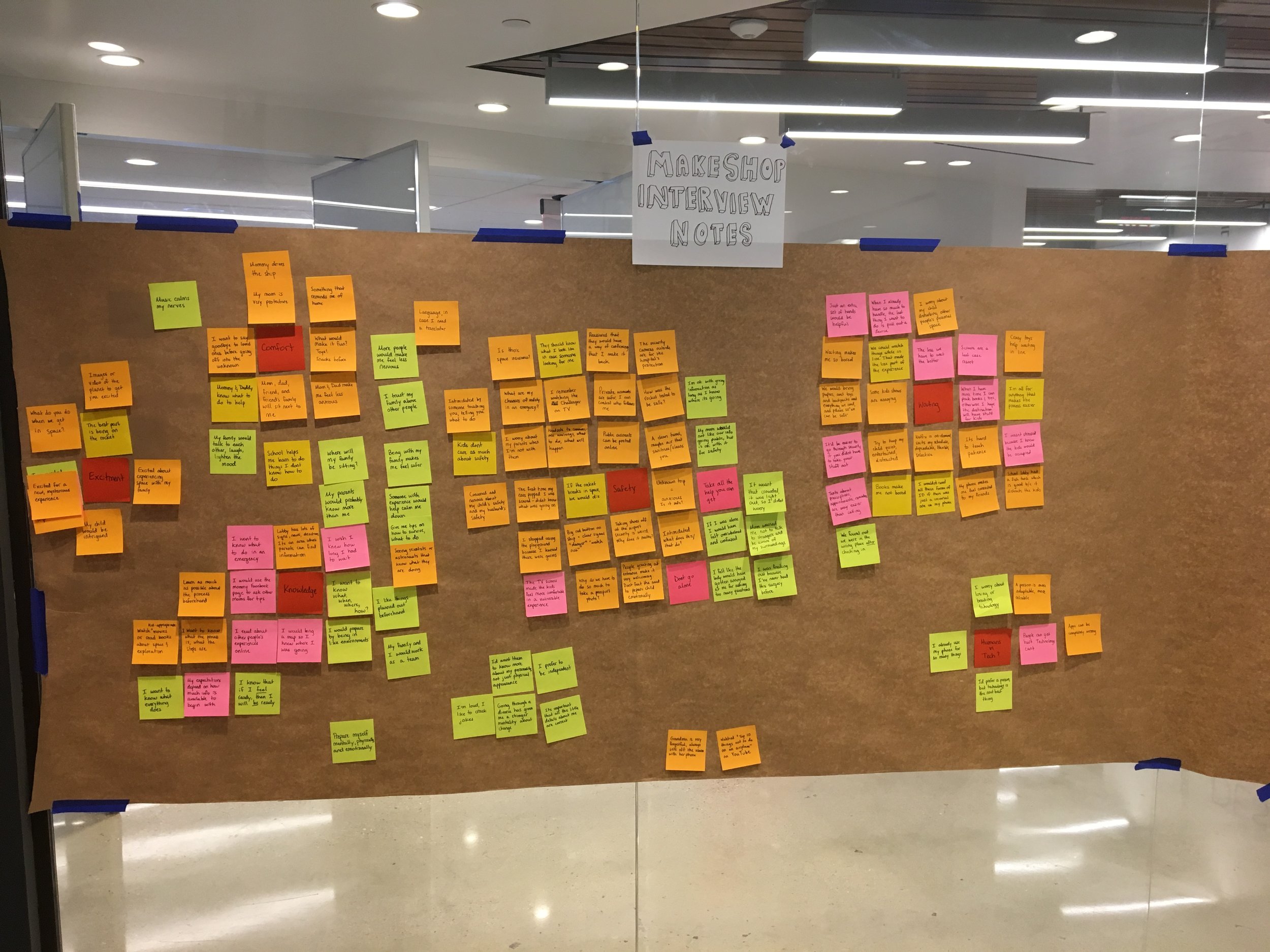

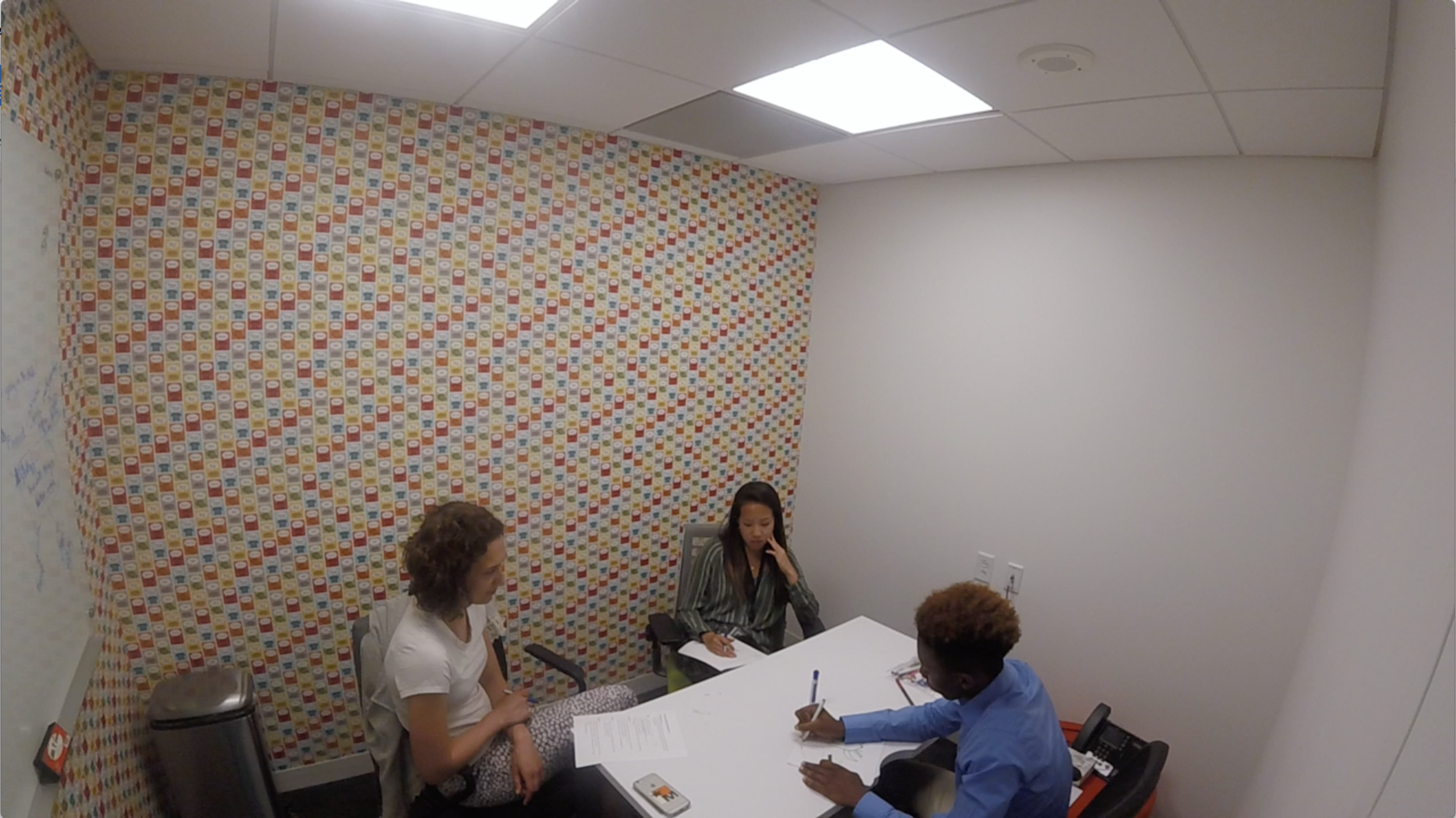
Our interviews took on the narrative of a family preparing to go on a space voyage in a rocket ship to make the metaphysical nature of what we were researching understandable. We asked children and adults how they might prepare themselves and their families for such a voyage; how they might approach emerging technology; and how they might want their identity to be captured and stored in this new transitional environment.
Discovery Workshop with Young Adults:
After the interviews we had the opportunity to conduct a workshop with a group of young adults interested in learning about design. I constructed a workshop agenda in which I asked the young adults to be researchers and designers with our team for a day, and to explore the issues surrounding transitional environments. The group was broken up into 6 teams and asked to complete a series of design thinking, prototyping, presenting and reflection exercises. Ultimately, the teams created a final design and pitched the work to the entire group. Our internal research team was able to gather a plethora of feedback and ideas on what these young adults thought should exist in a transitional environment experience.
Synthesis, Future Concepts and Service Blueprint:
Research from the interviews and workshop was combined and synthesized using a thematic grouping approach focused on needs, pain-points, perspective, age, and role within the family. The summary of our findings is below:
Our full research read-out can be seen here:
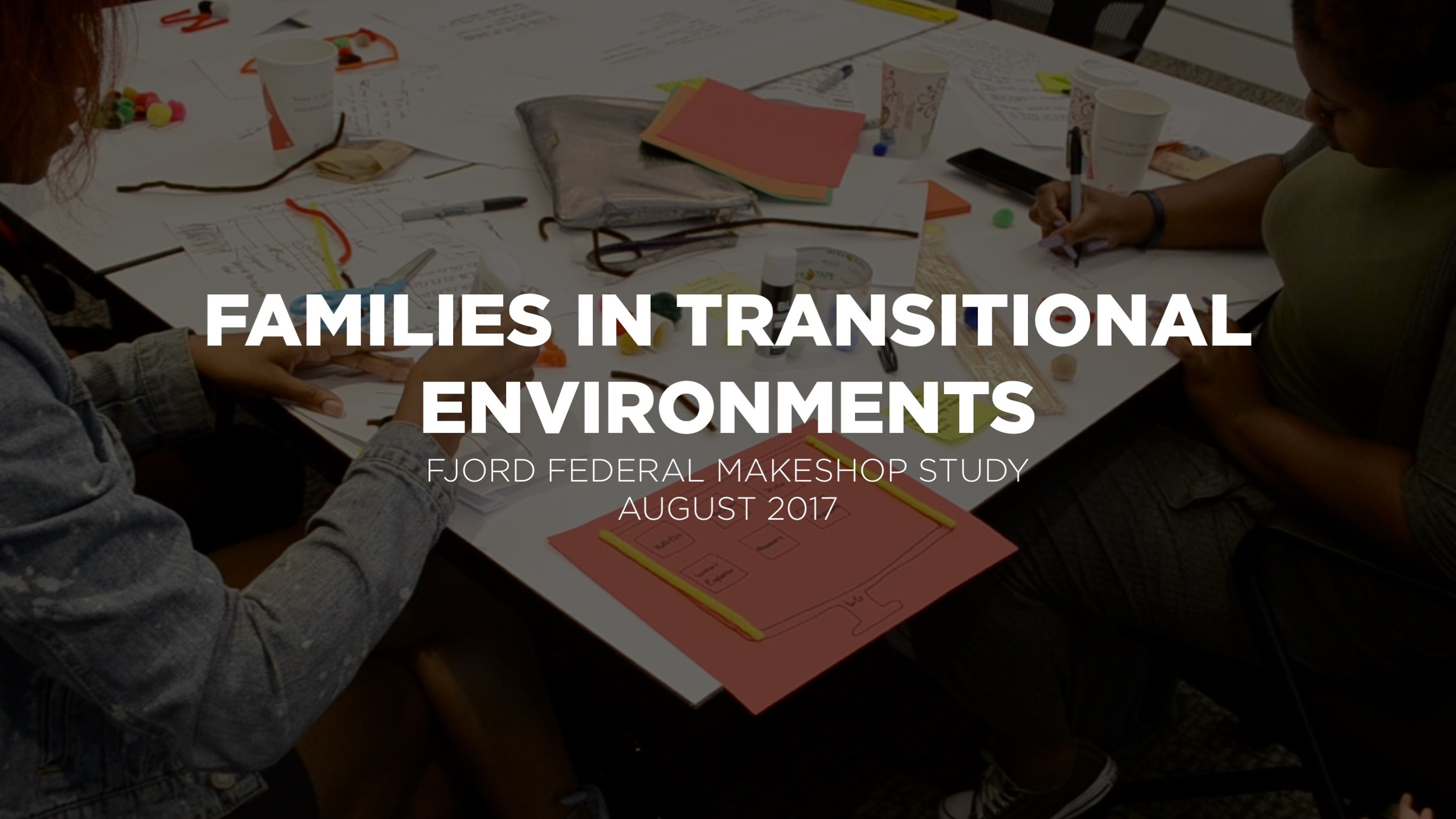
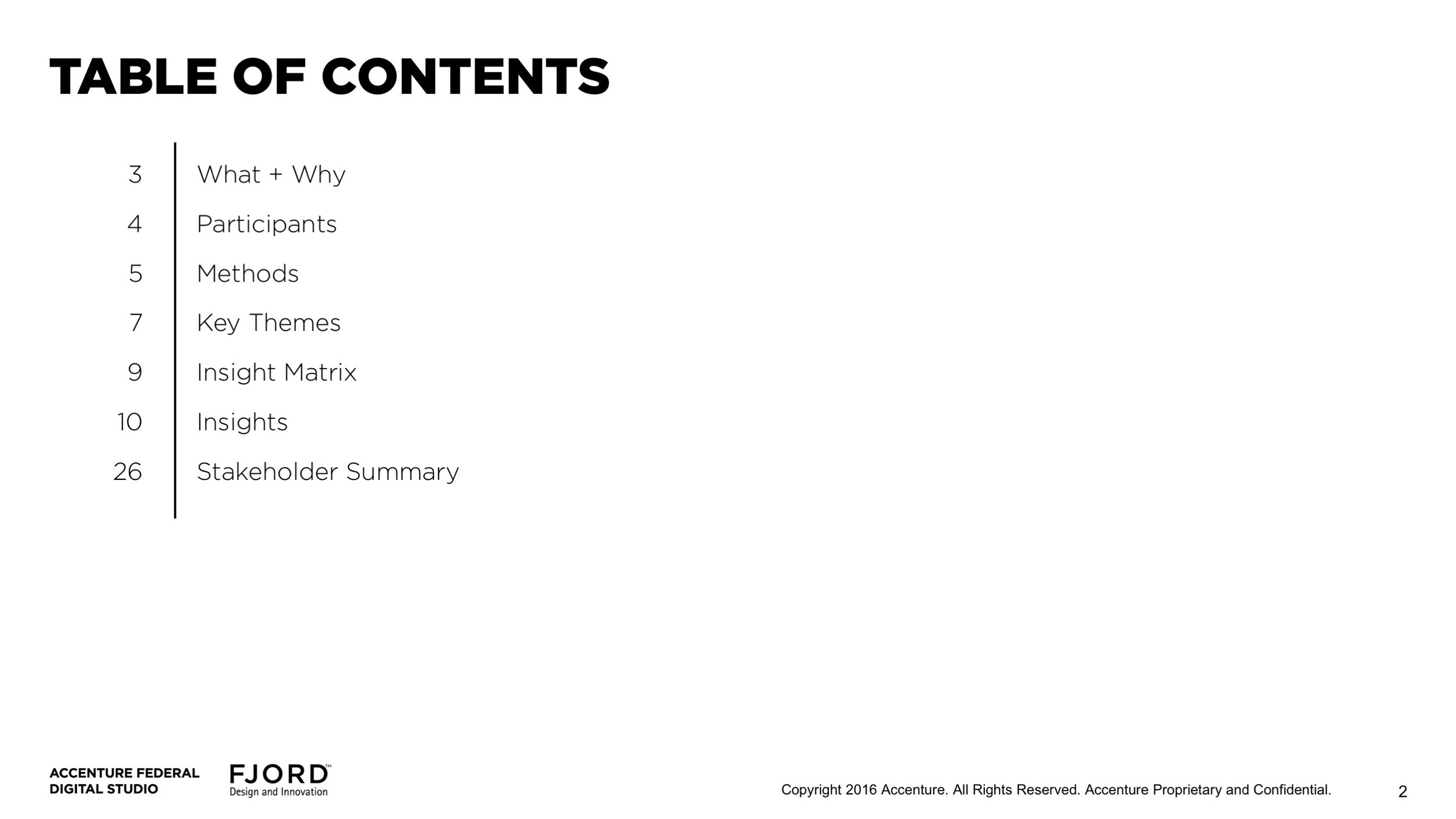
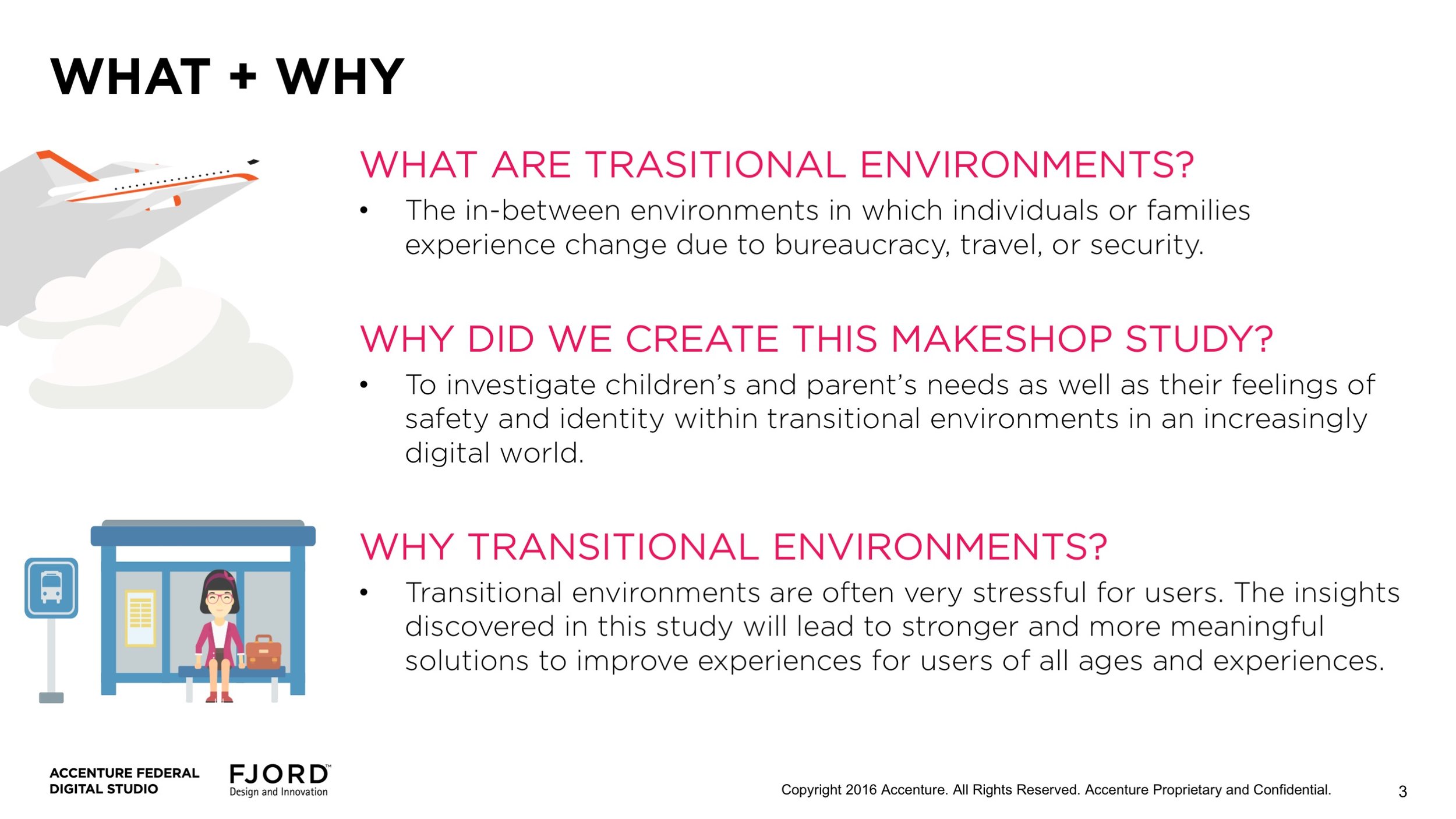
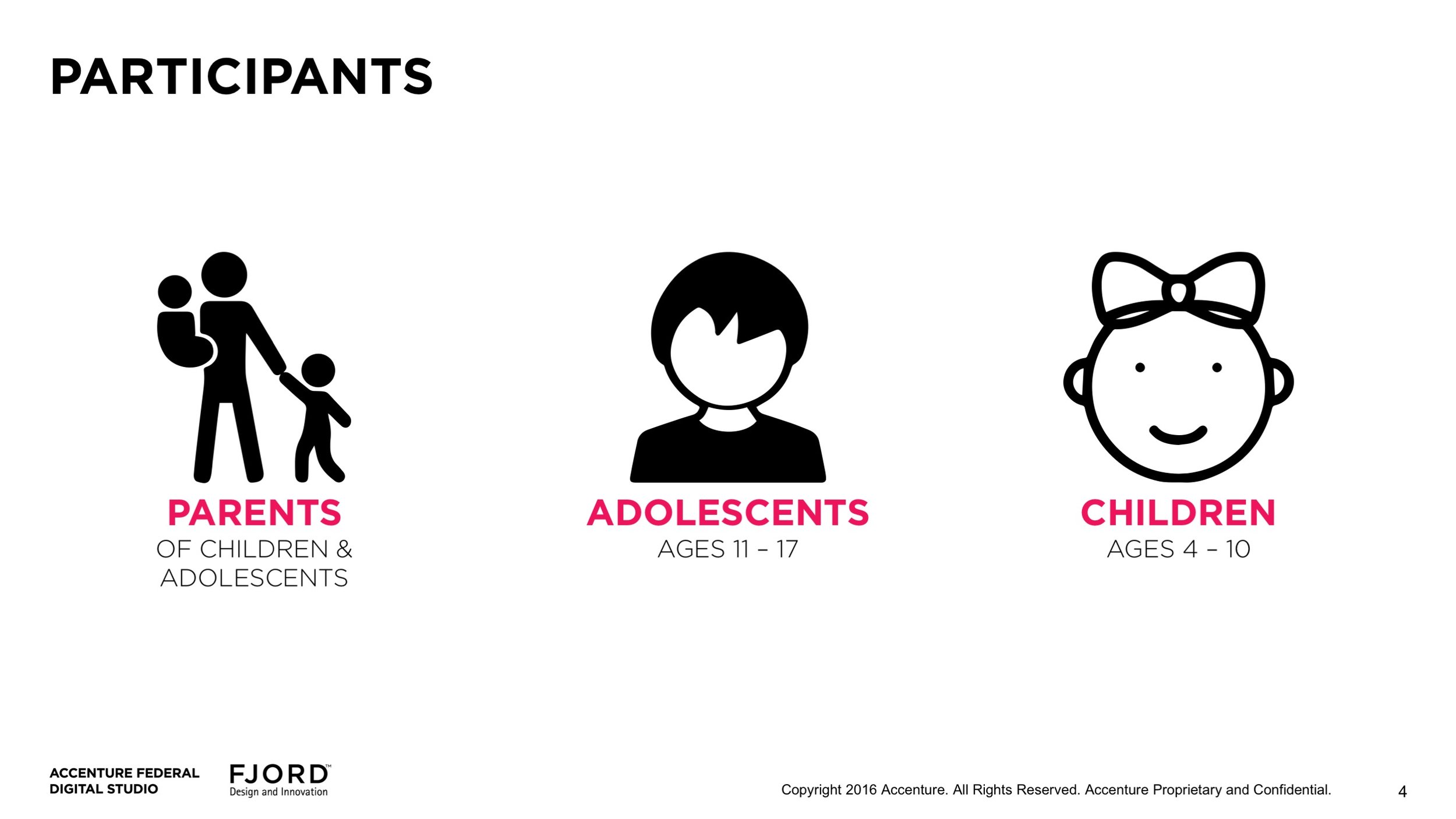
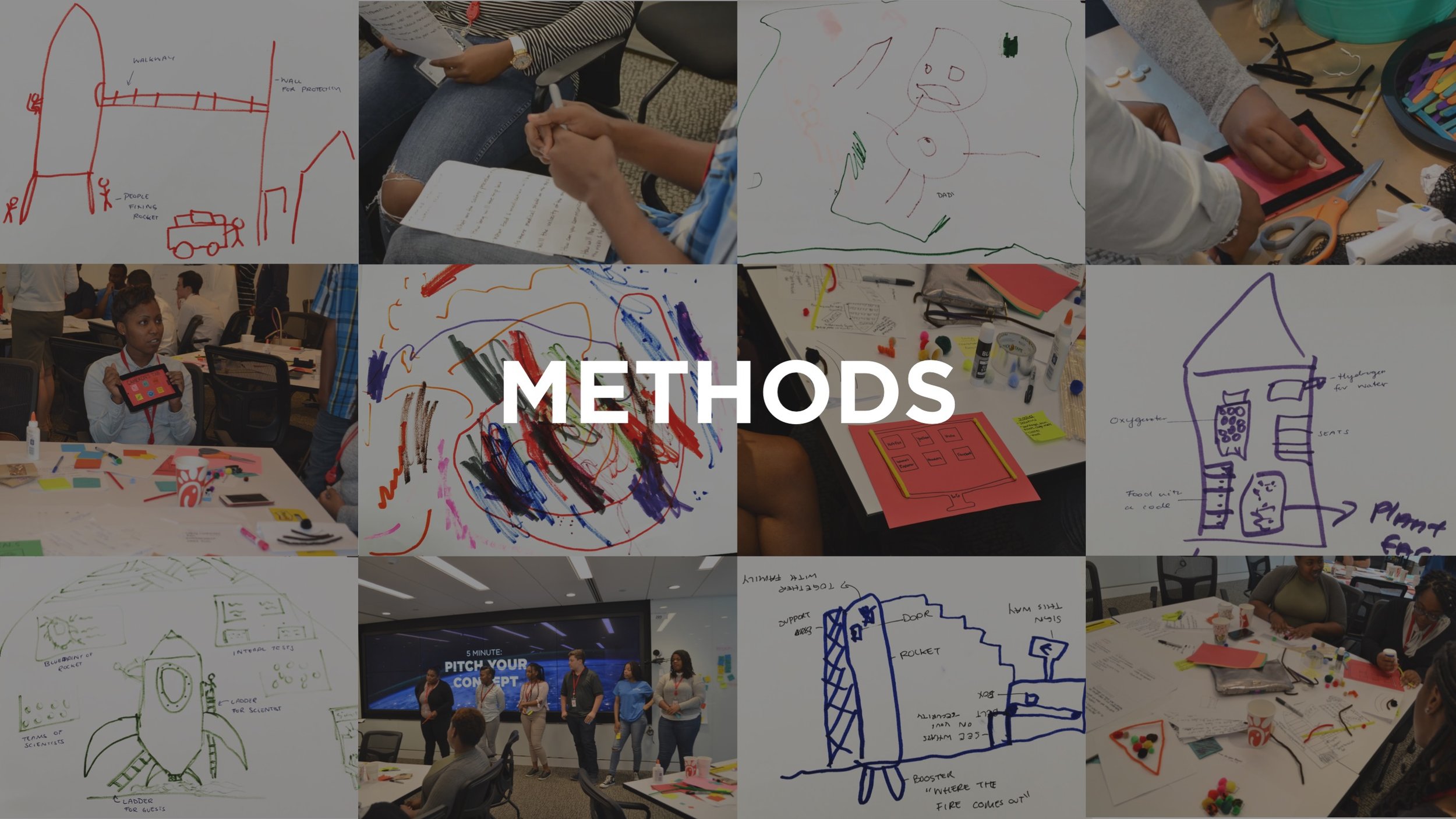
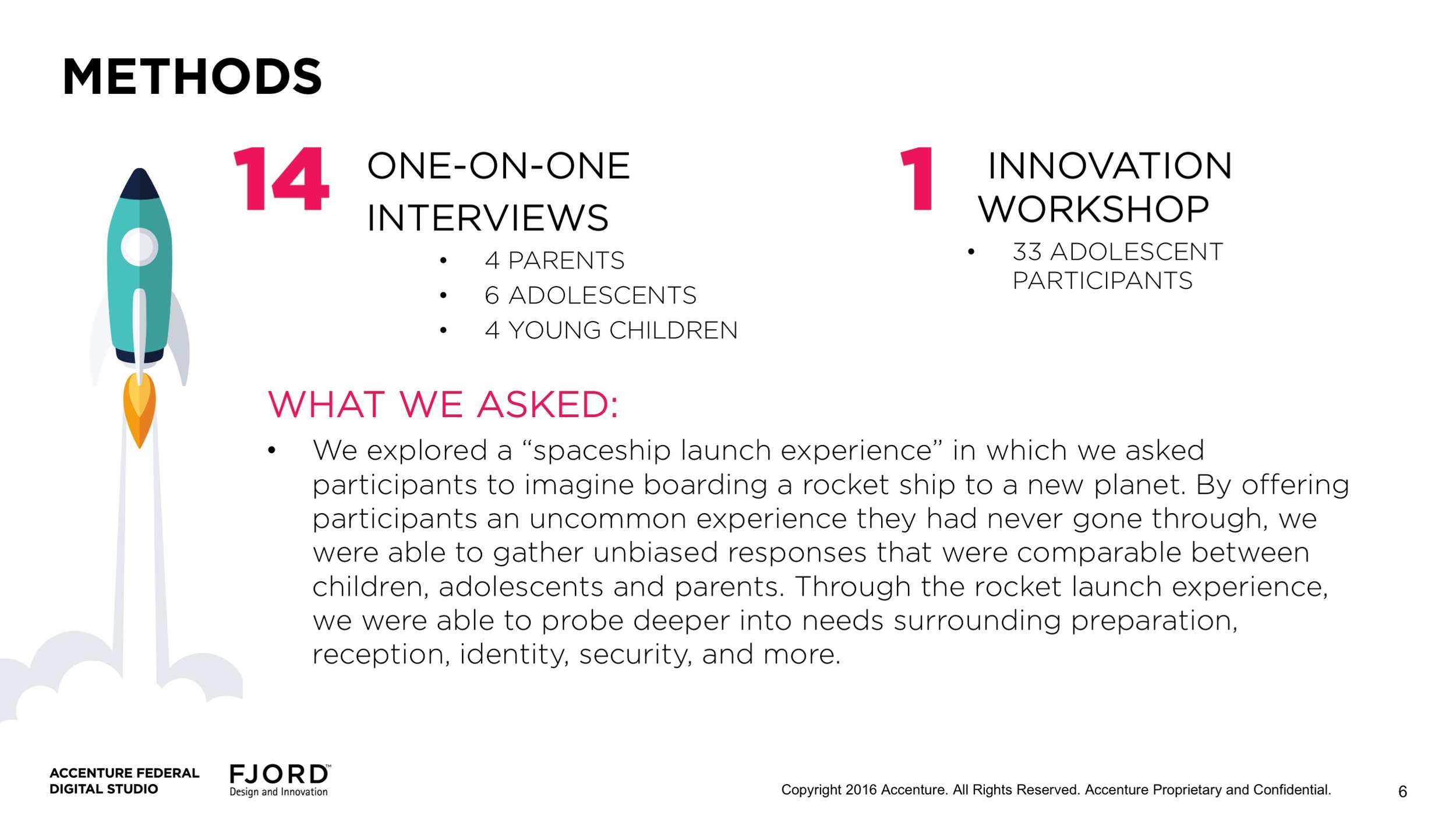
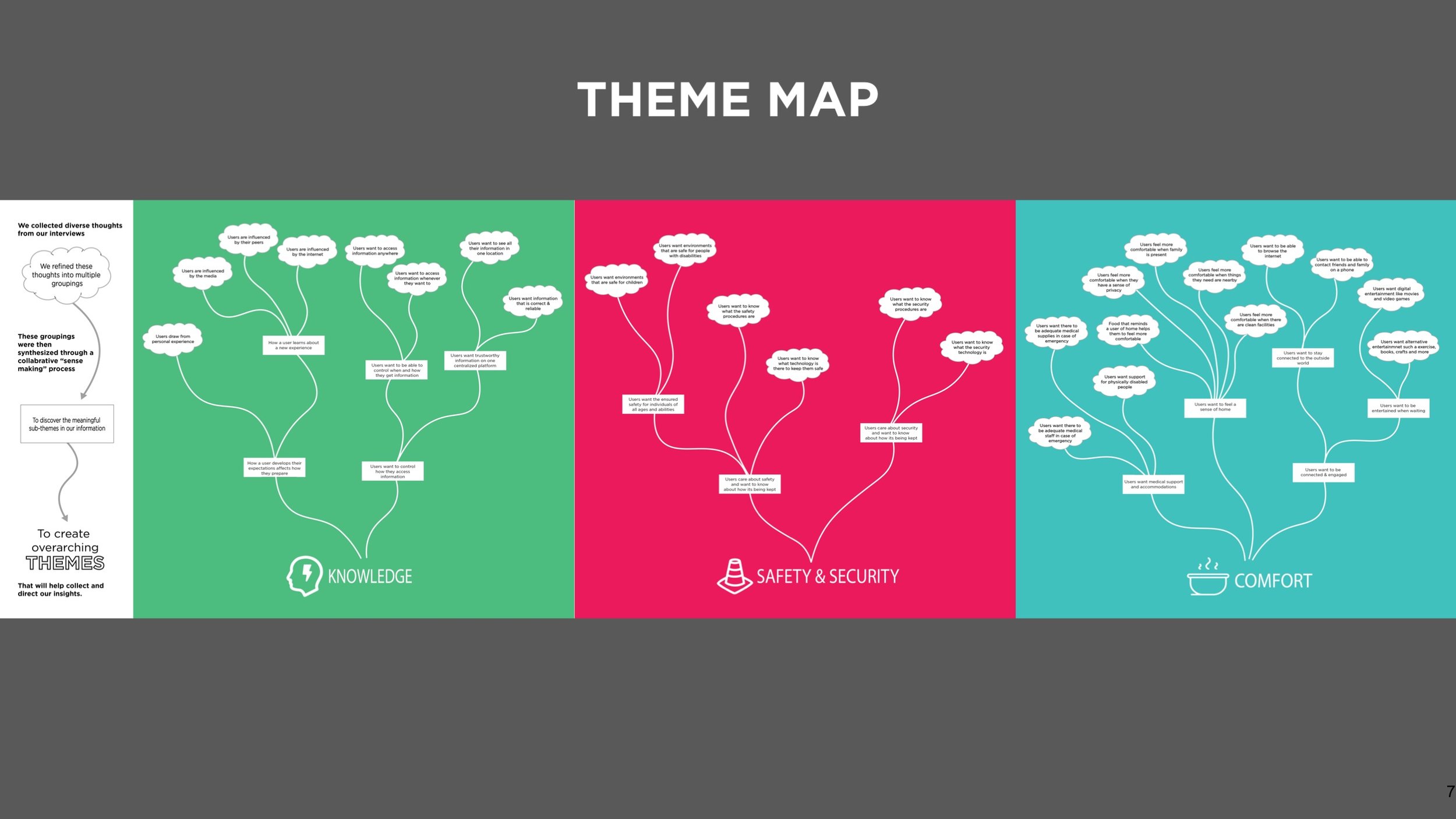
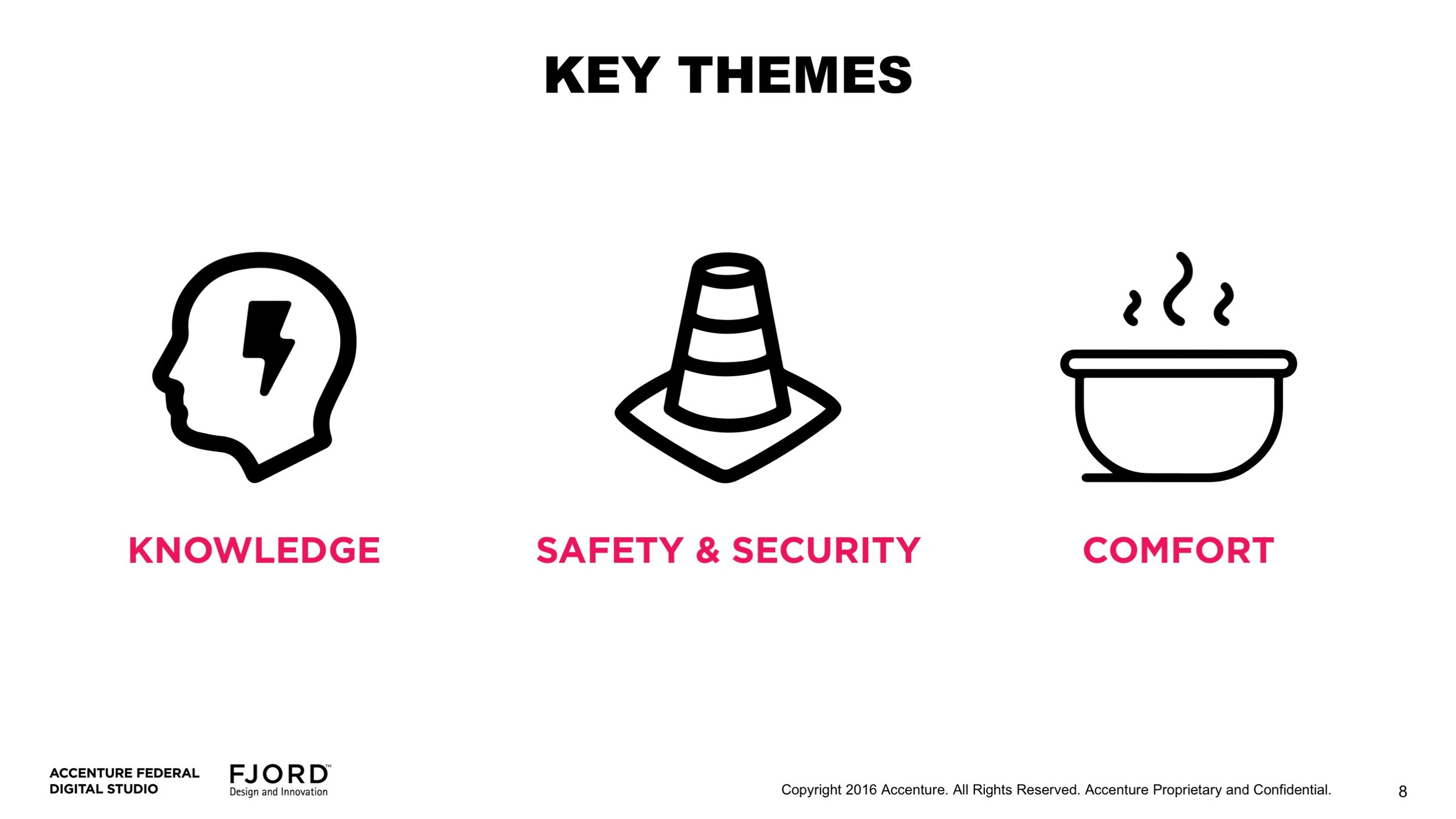
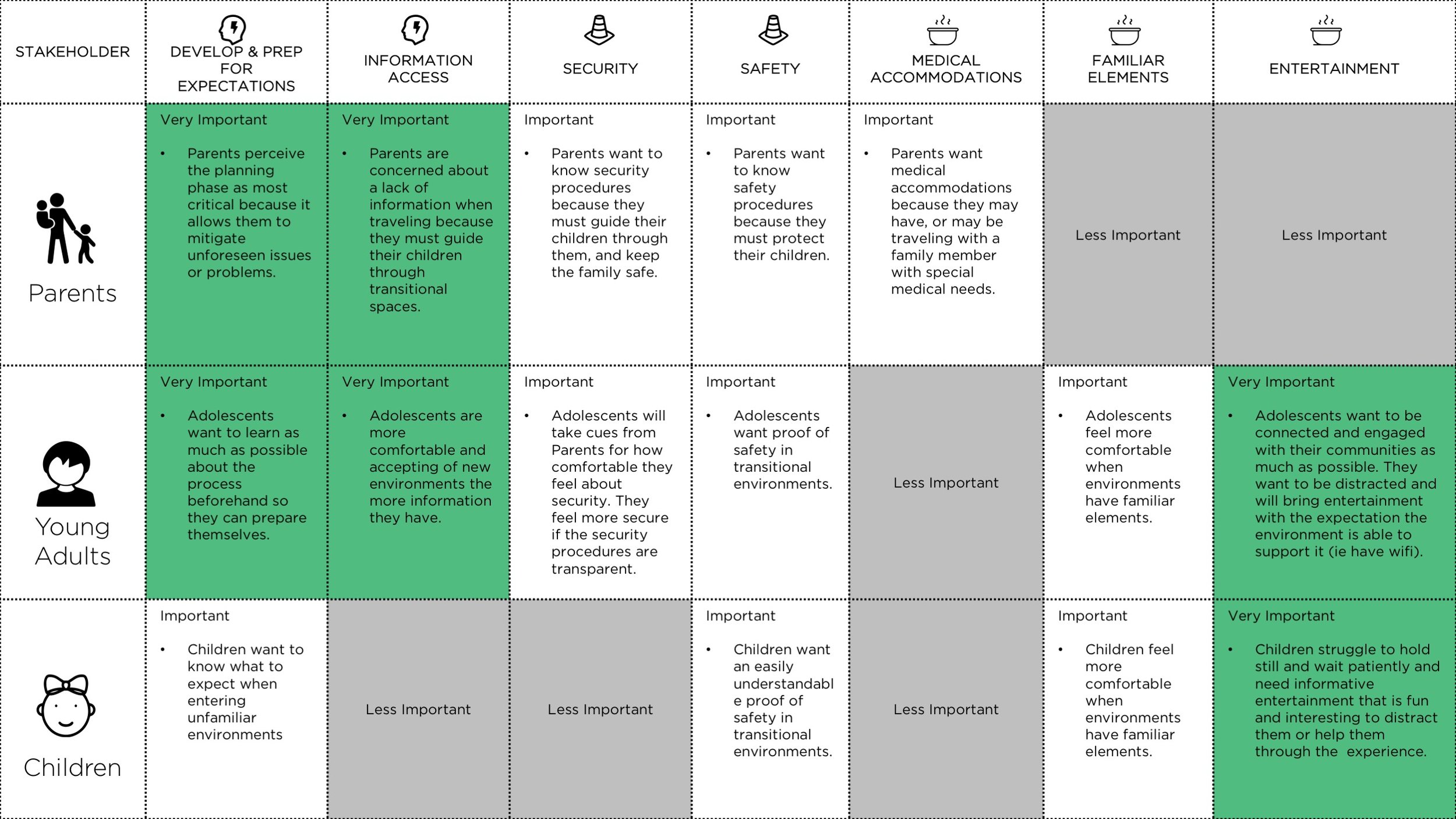
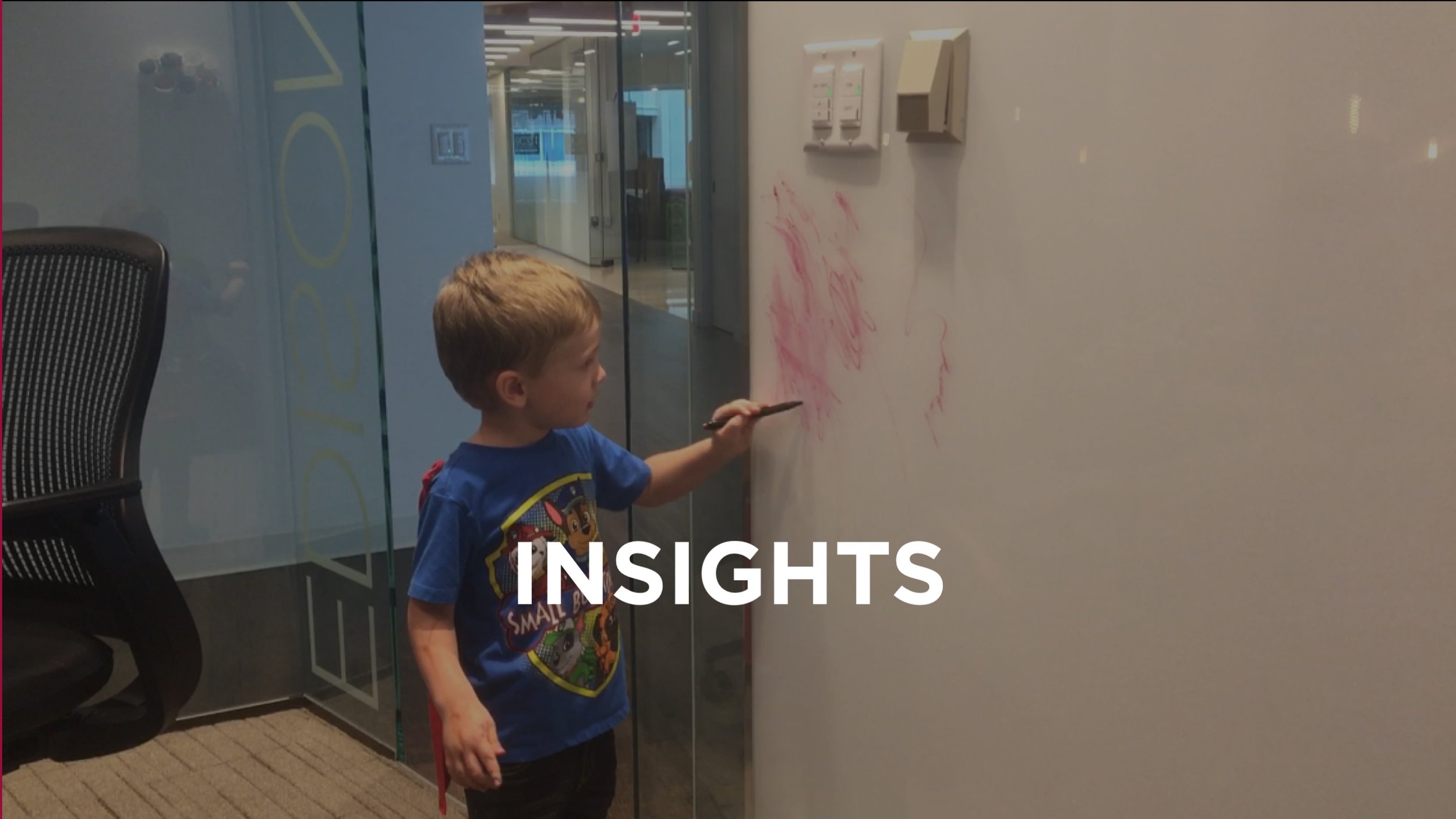
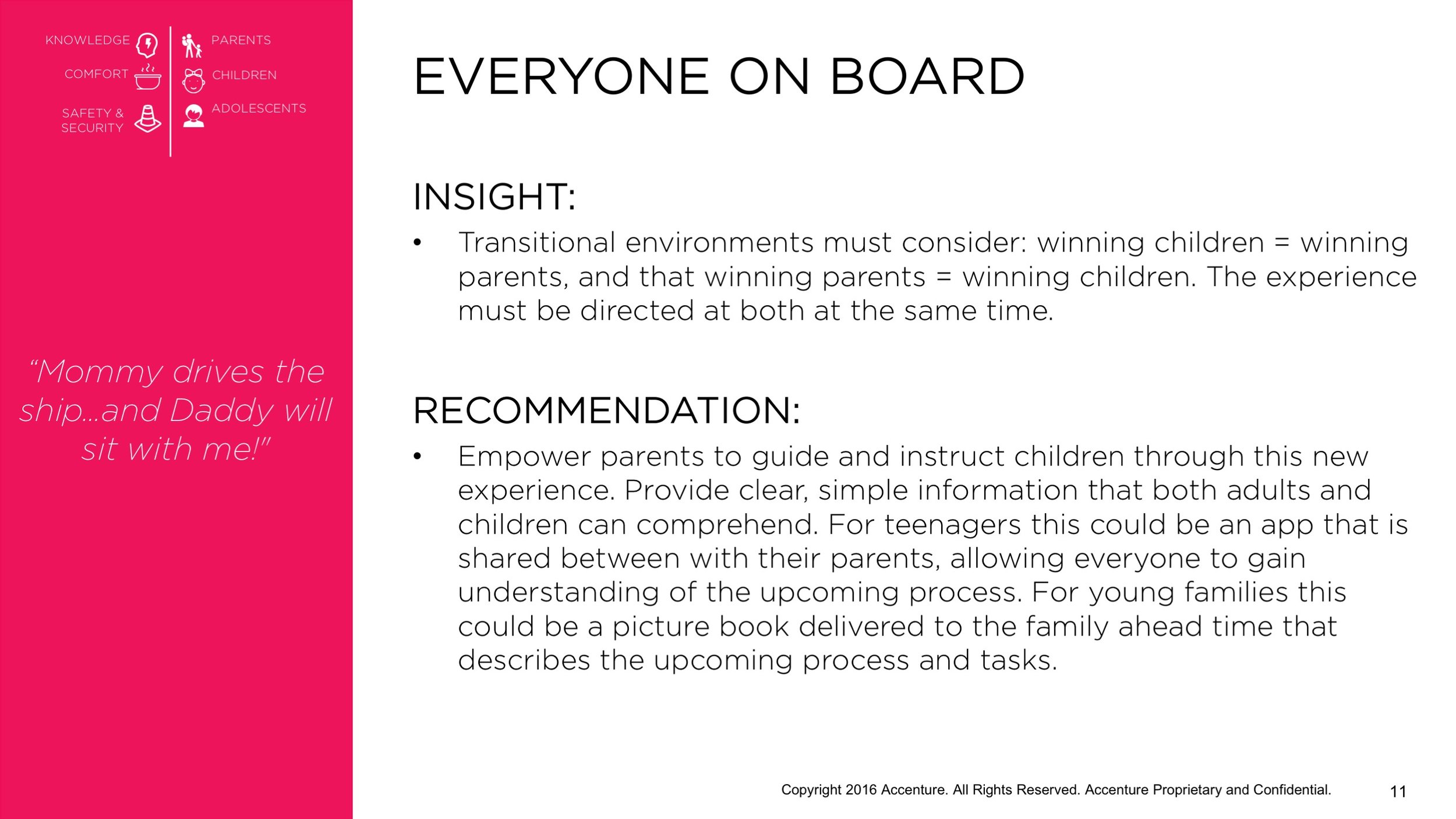
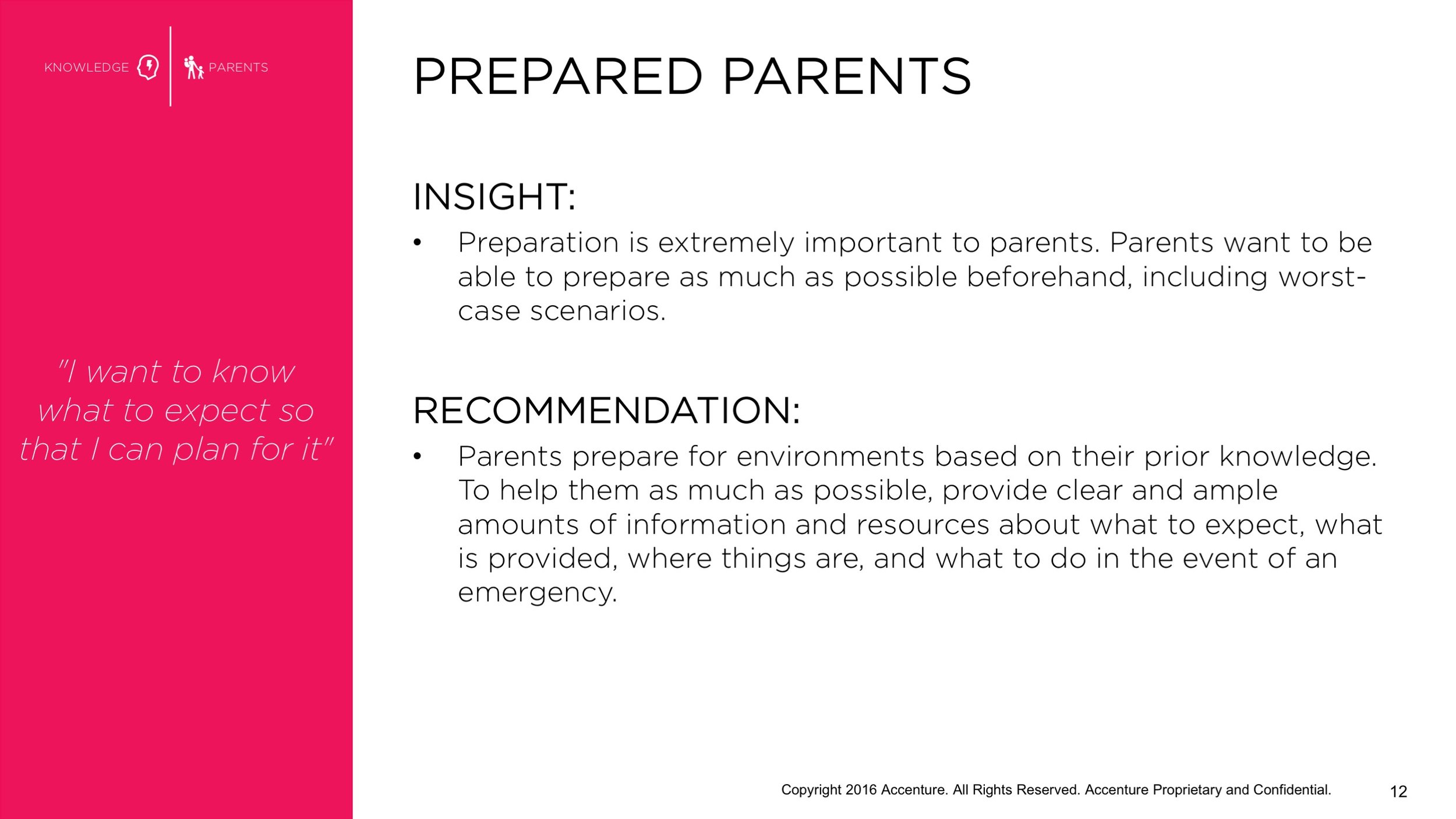
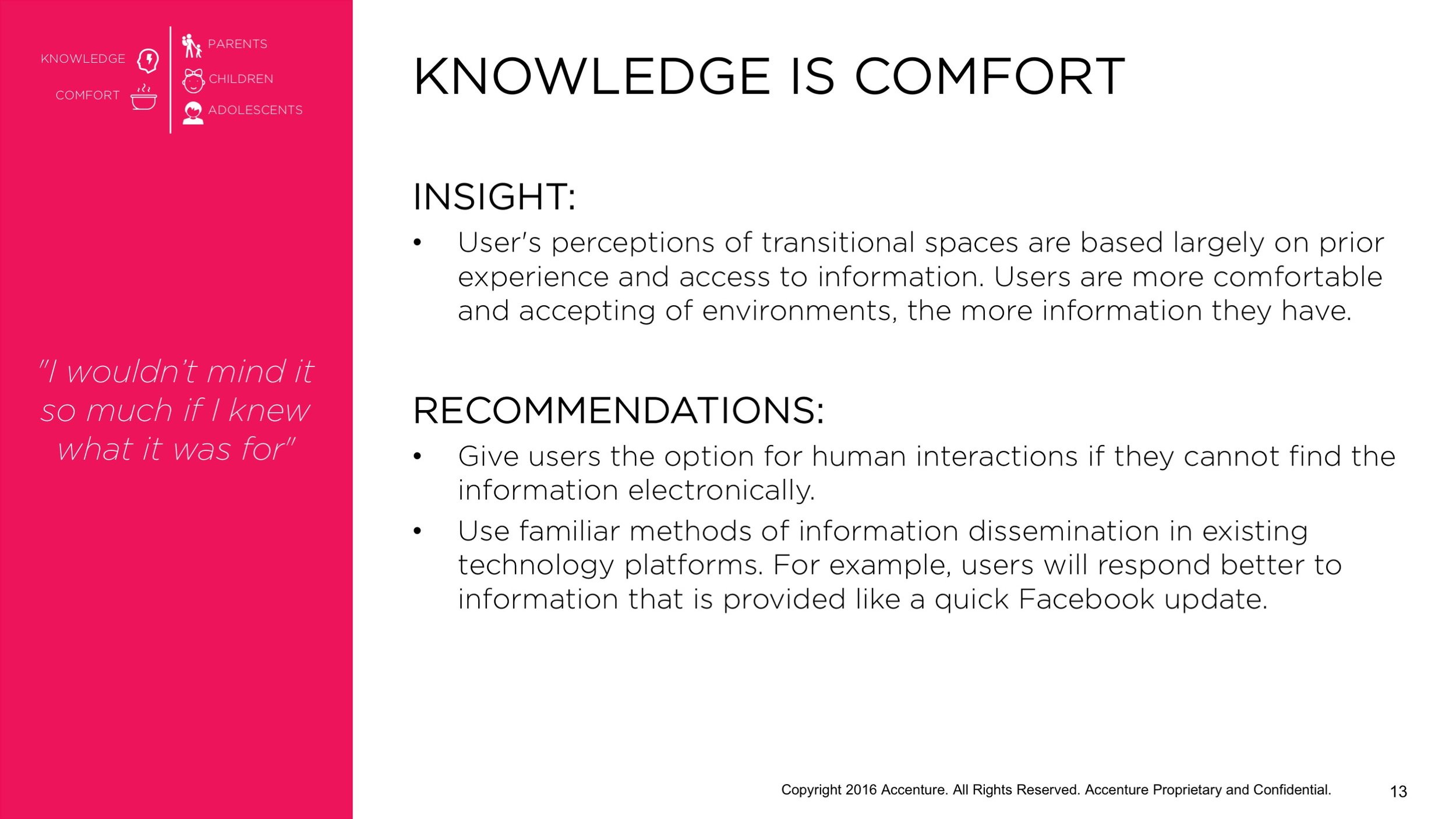
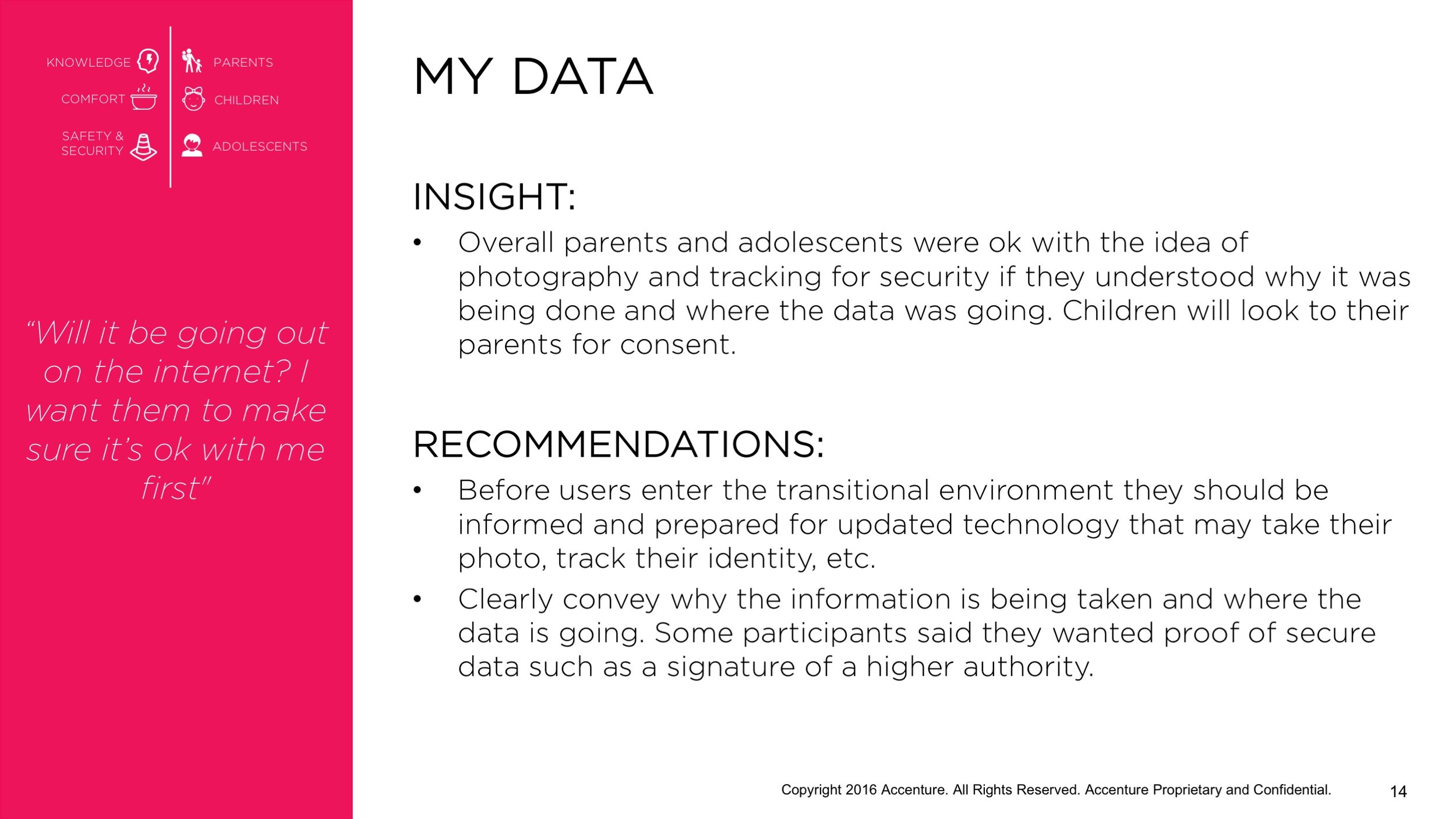
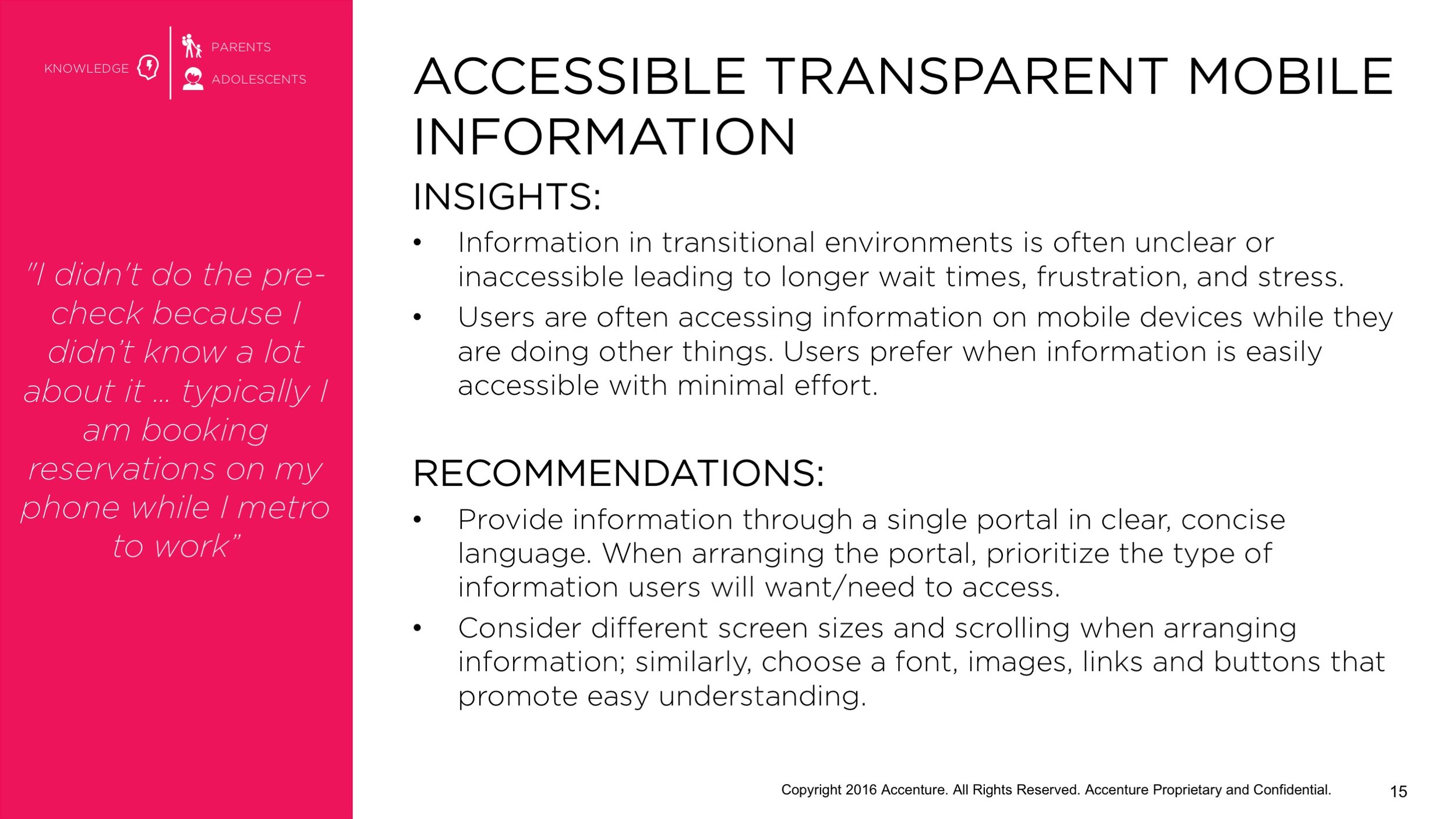
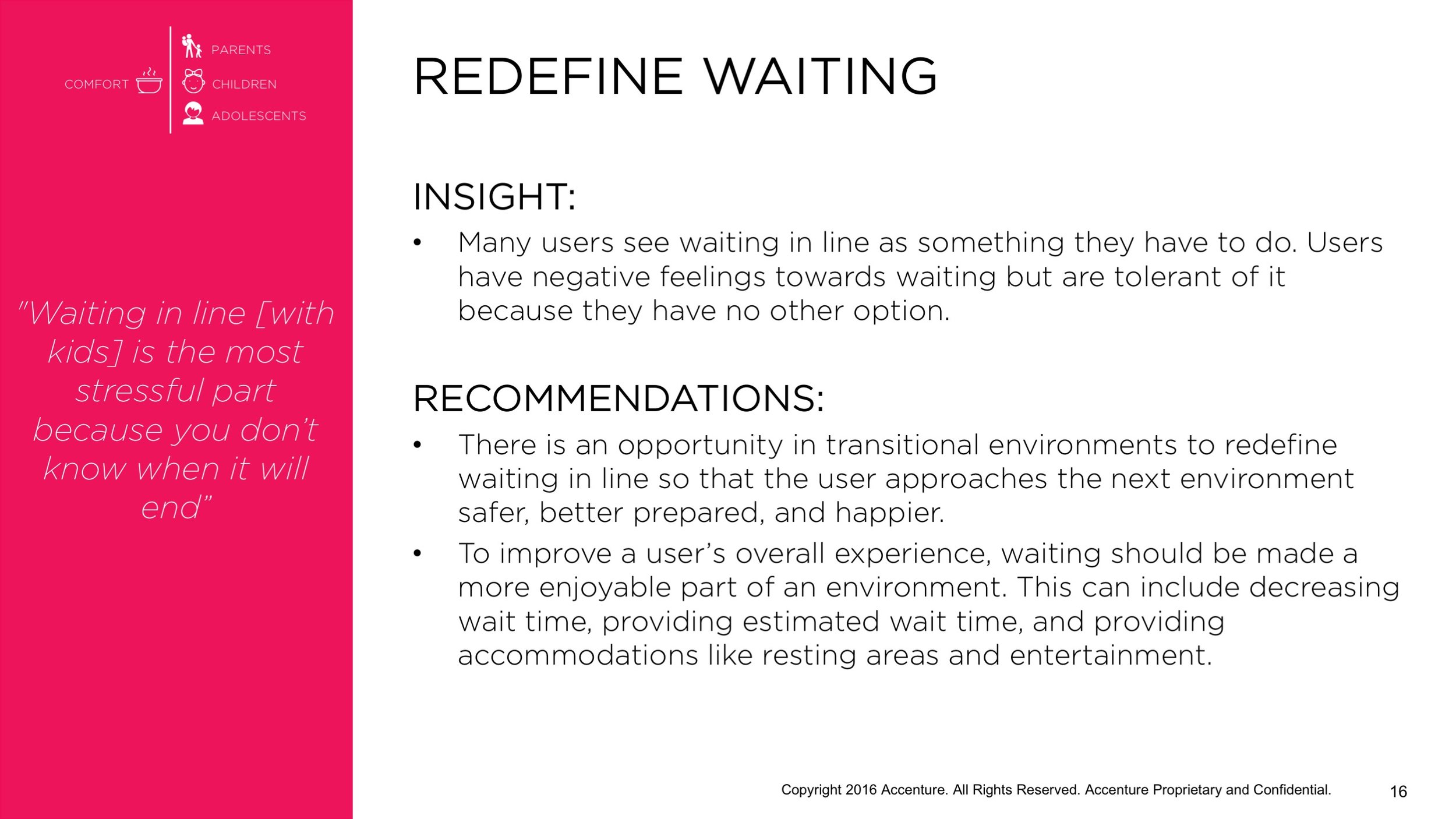
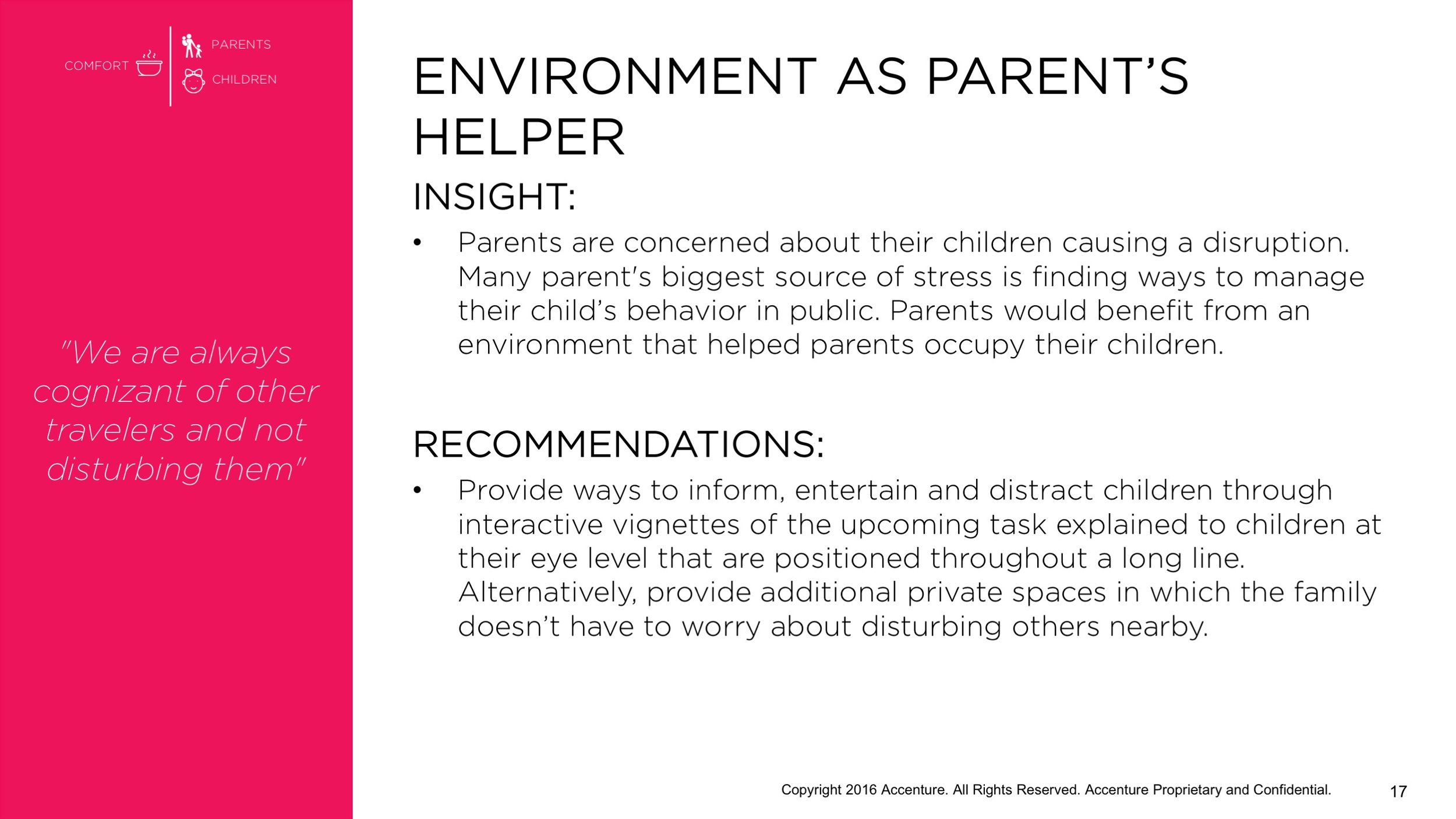
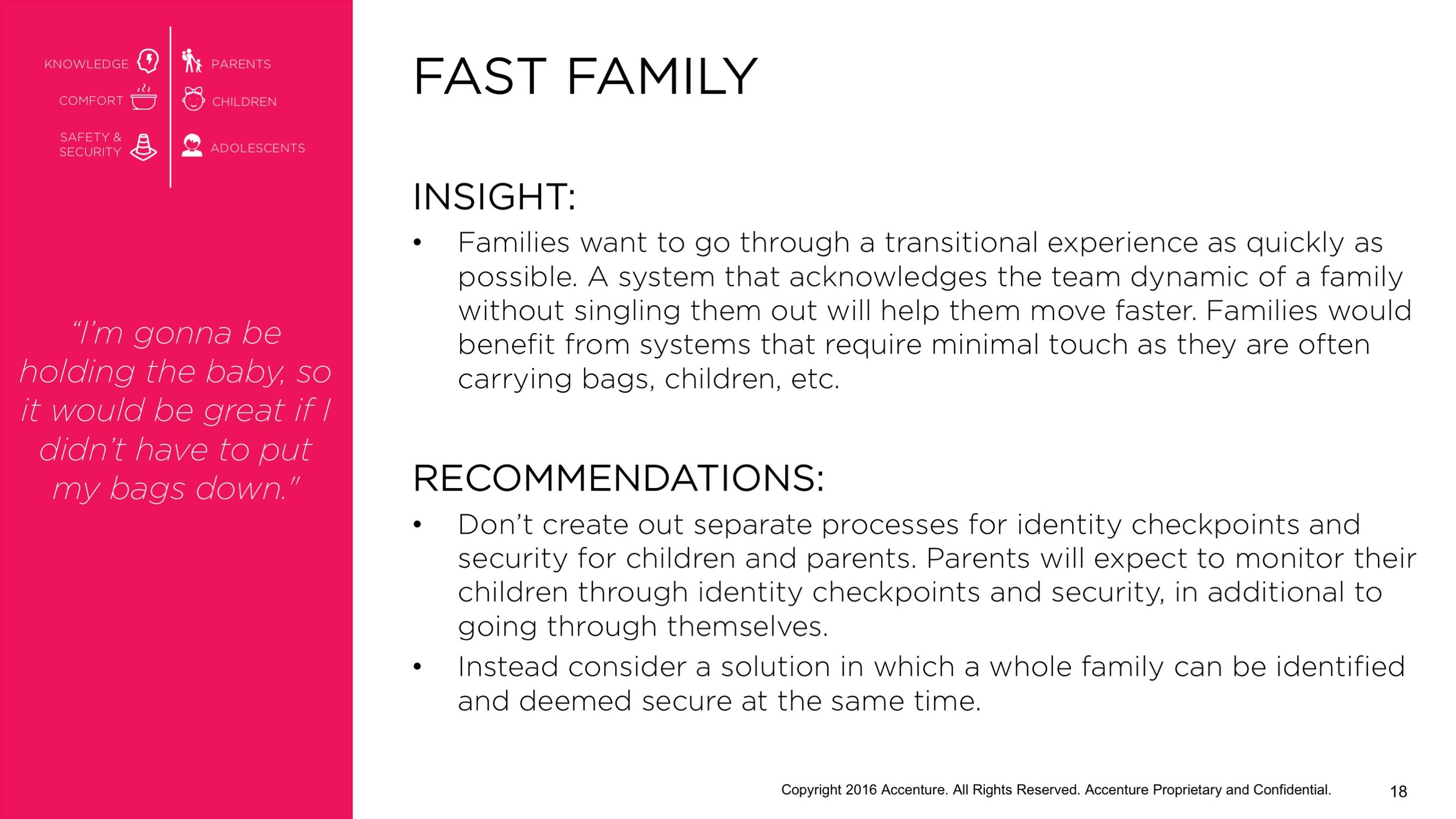
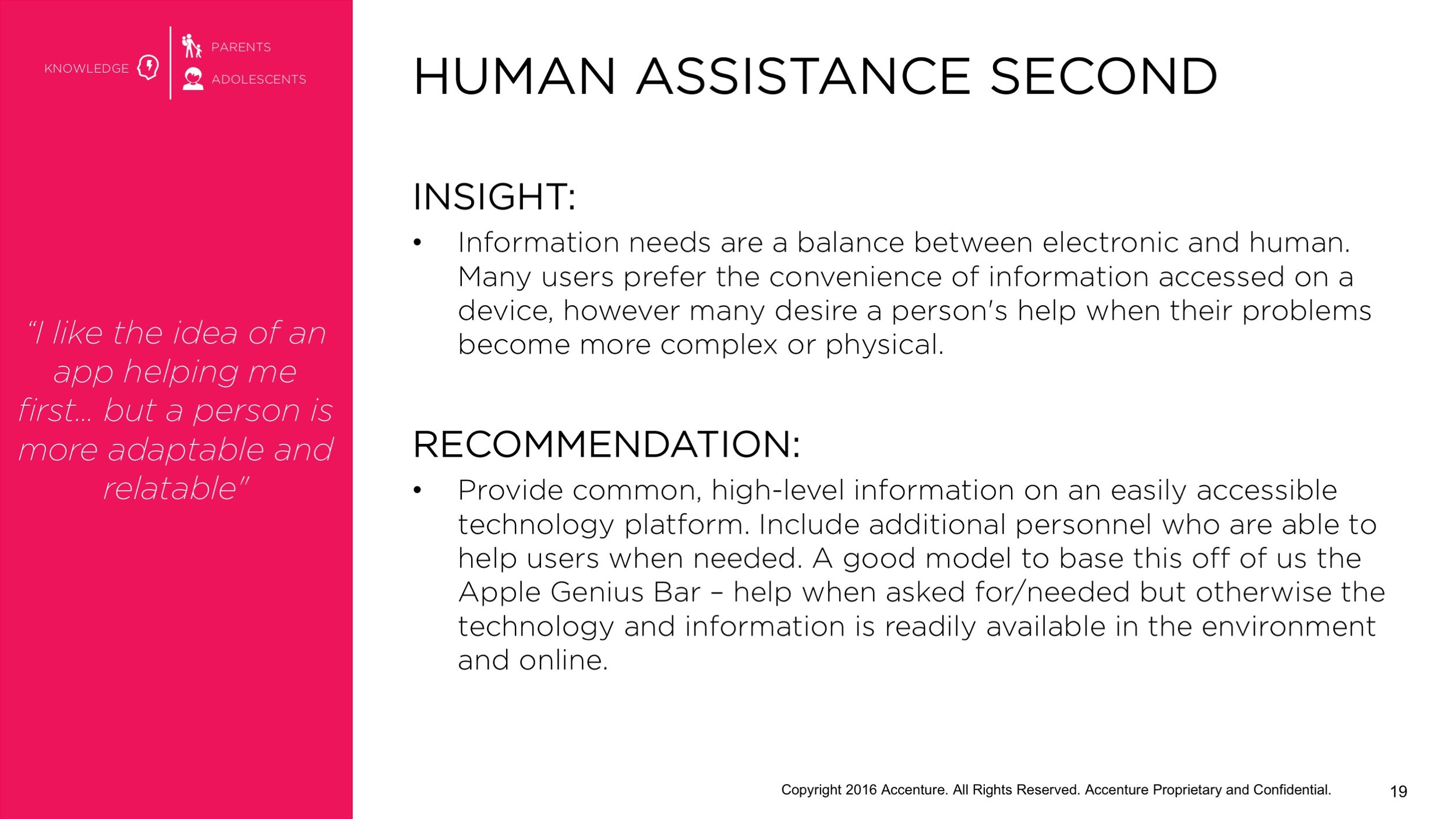
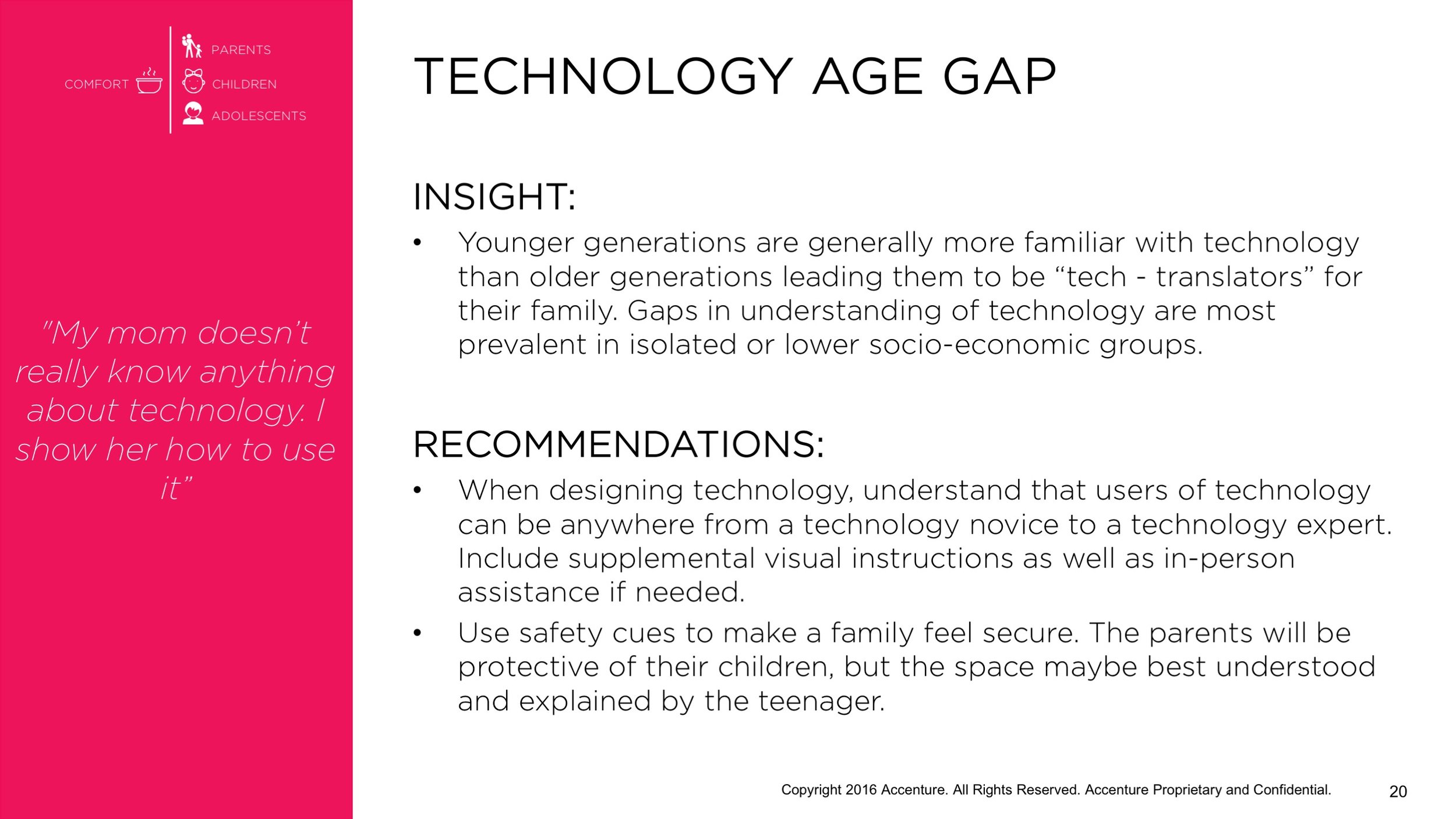
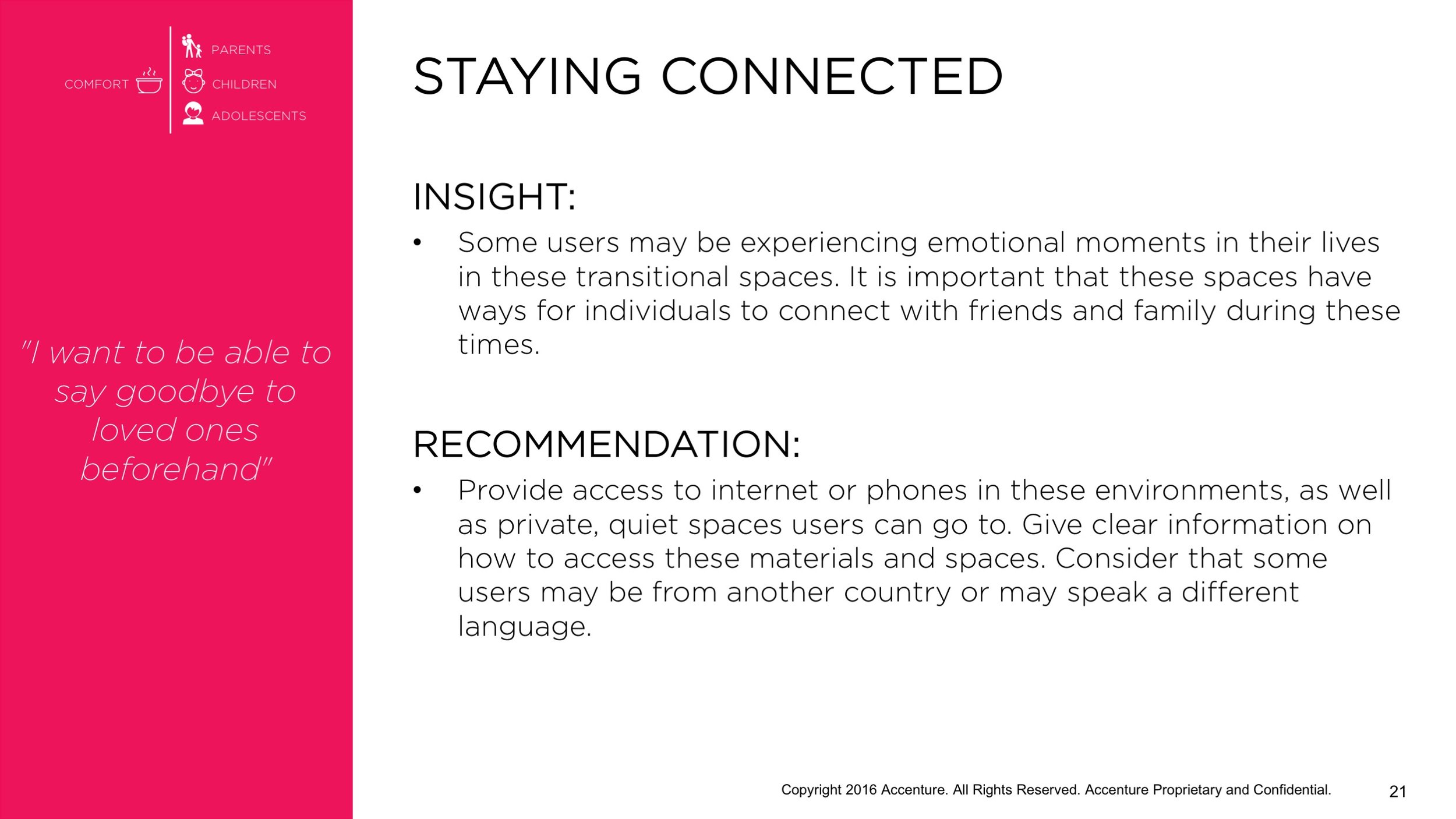
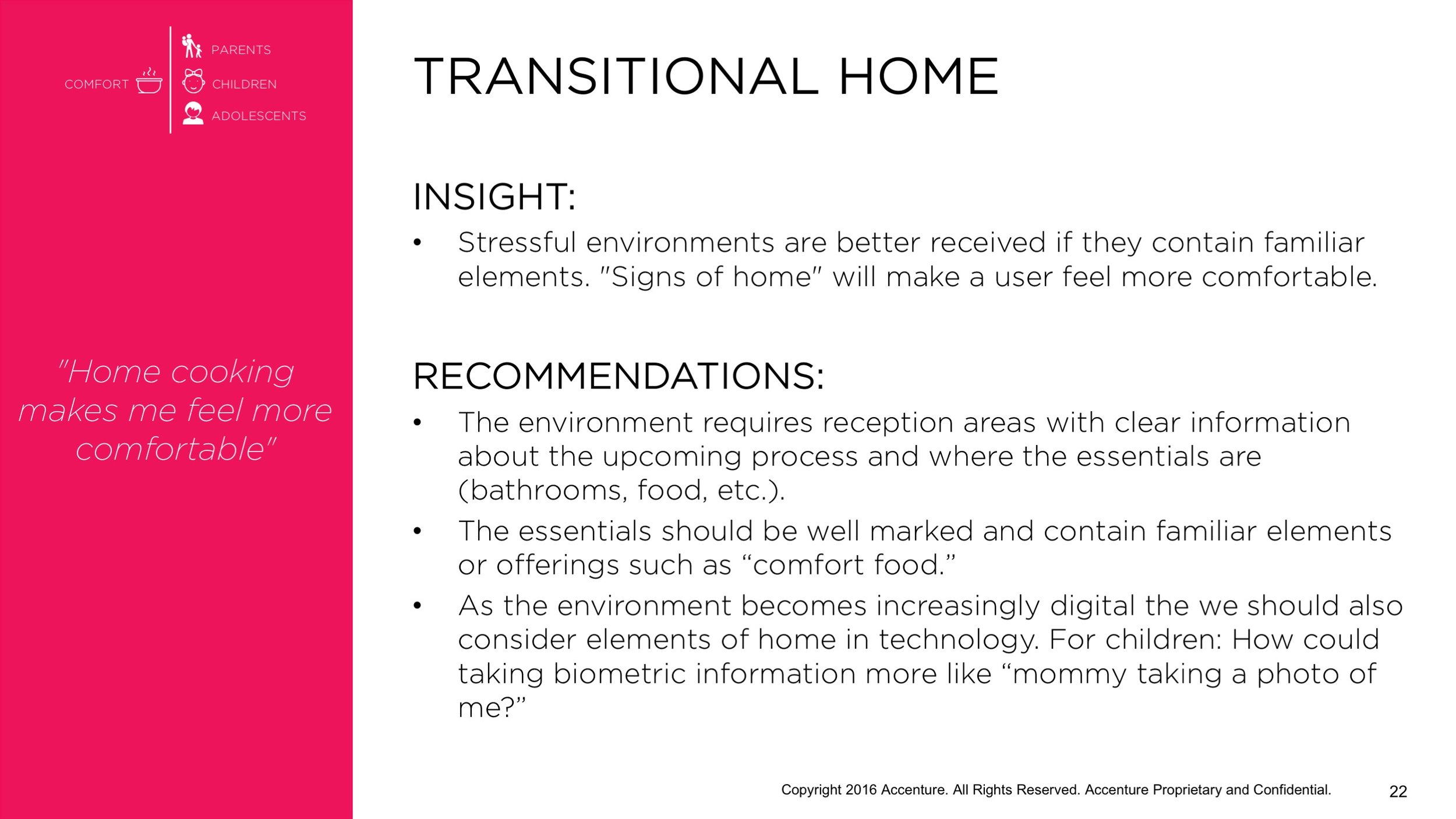
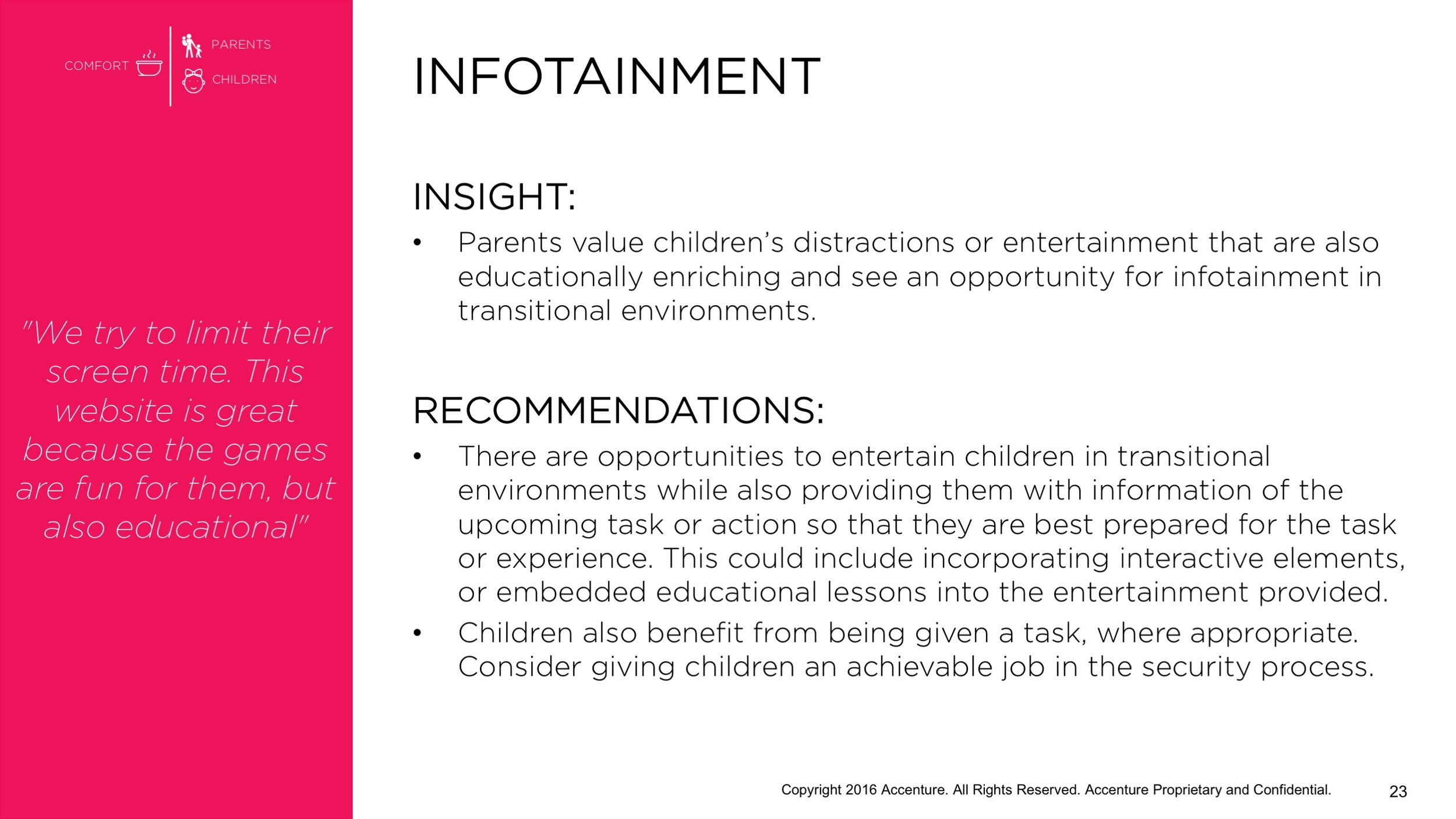
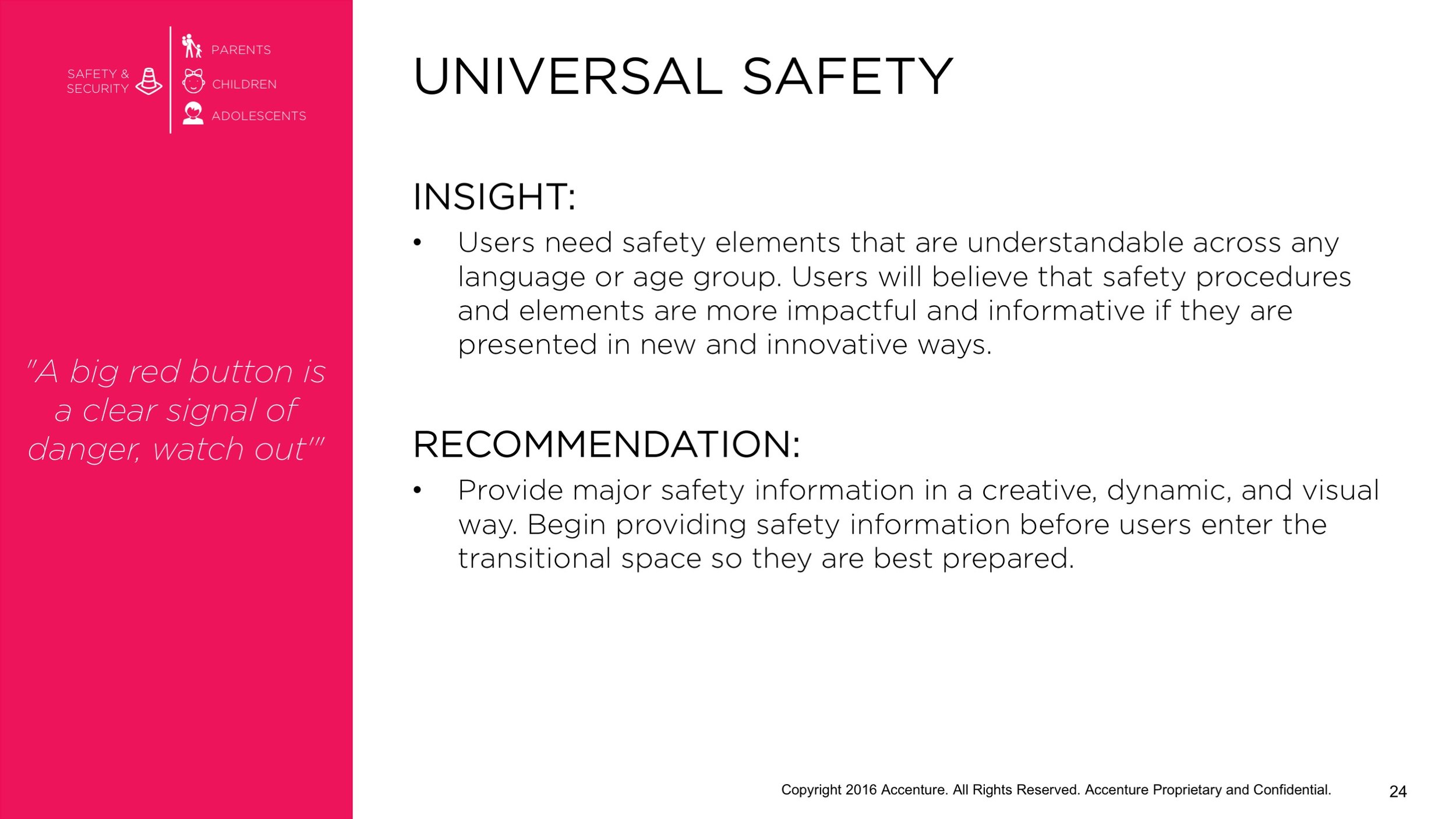
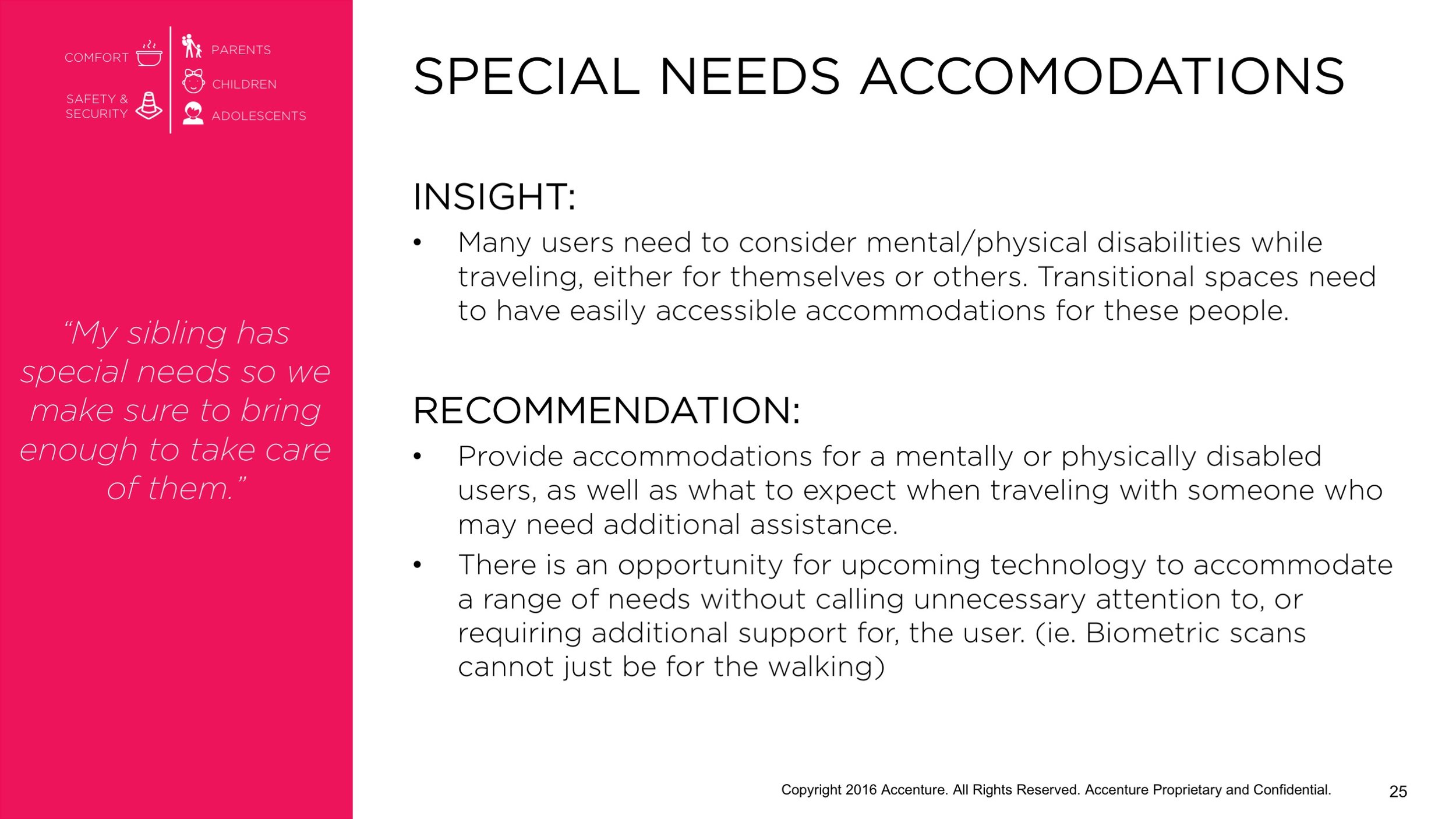
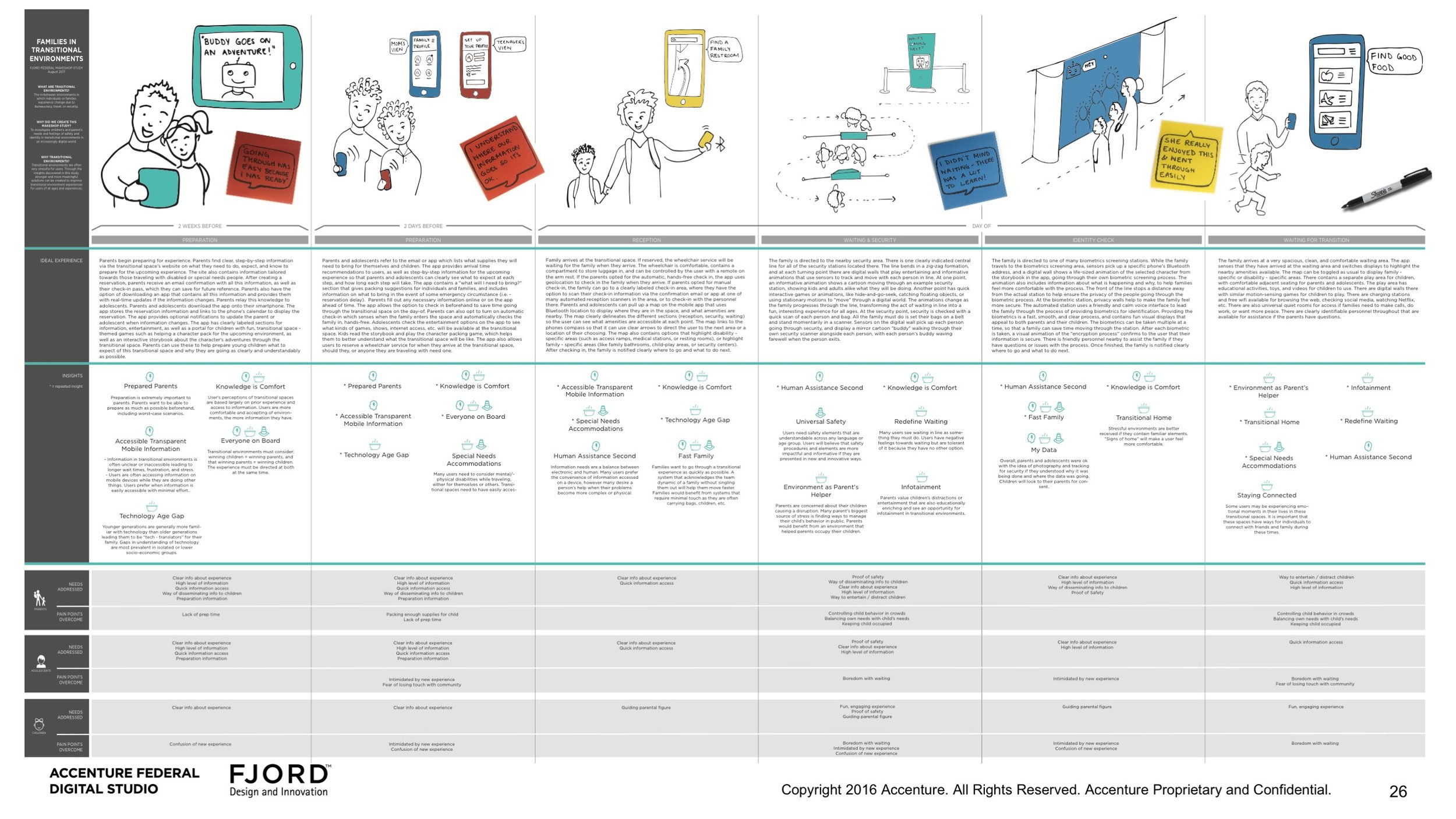

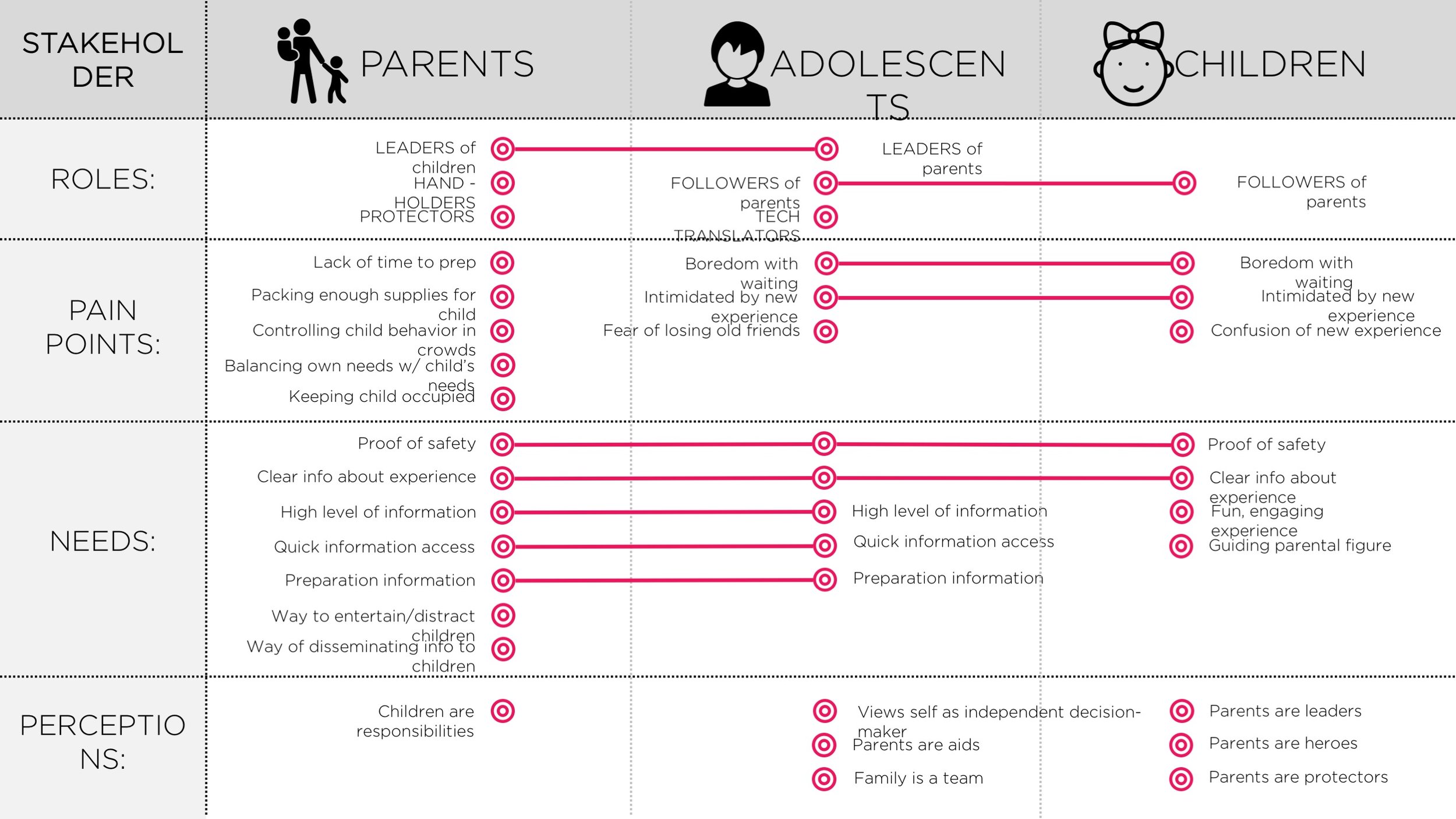
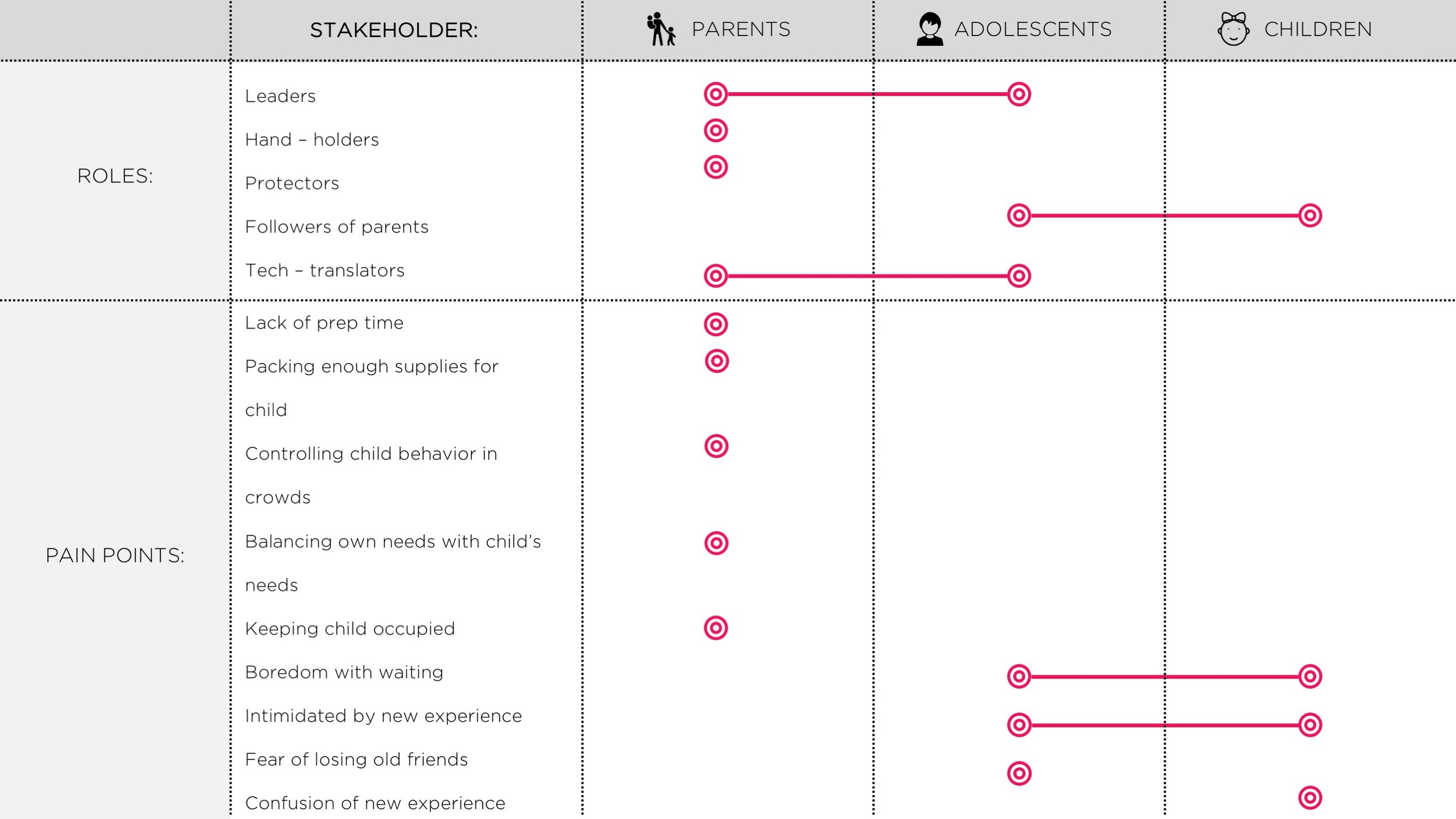
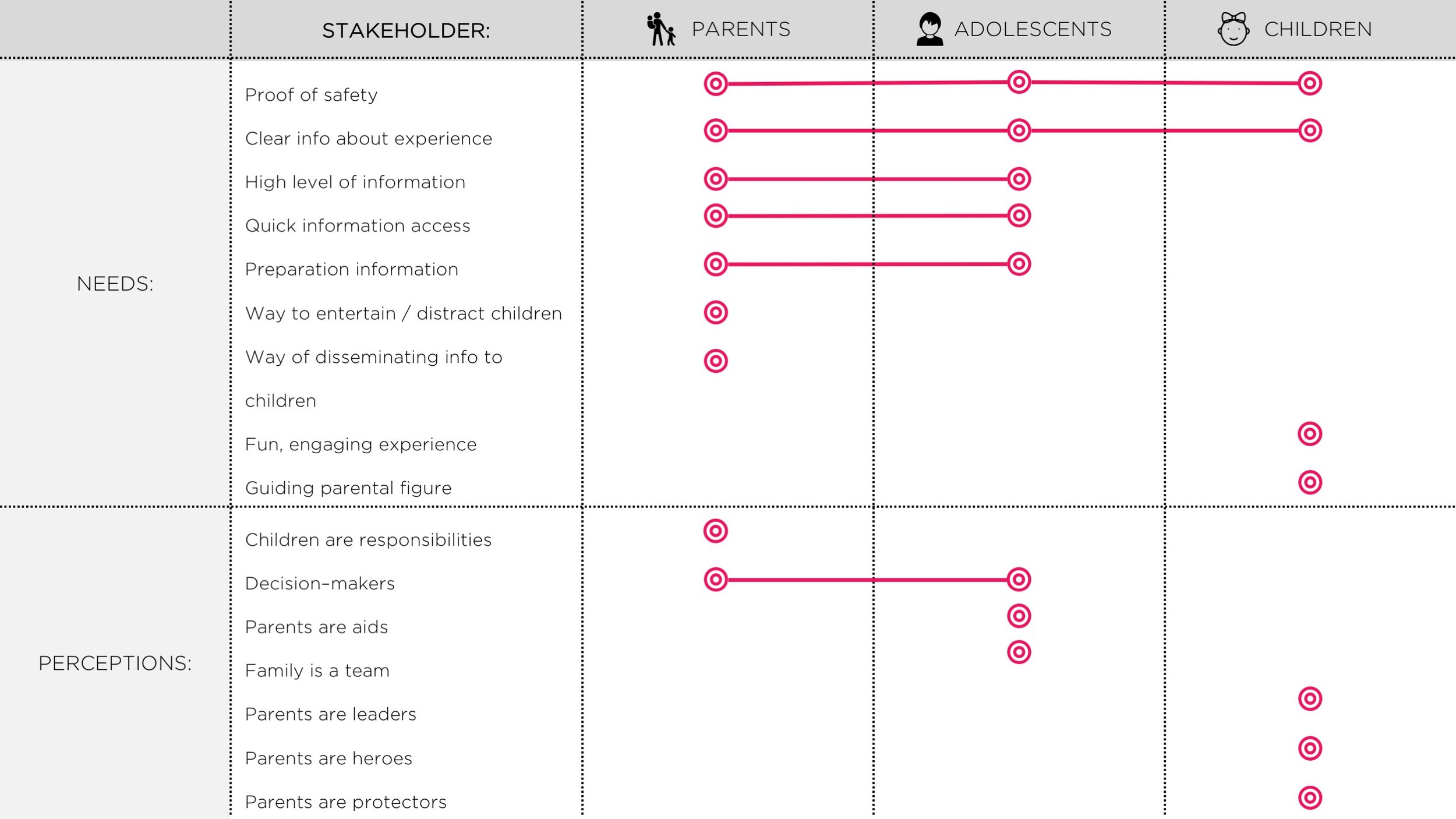
This research inspired our future-state concepts, which we mapped along a future state journey, and then expanded for a full blueprint:










